𝐓𝐰𝐞𝐥𝐯𝐞 𝐂𝐡𝐫𝐢𝐬𝐭𝐦𝐚𝐬 𝐓𝐫𝐚𝐝𝐢𝐭𝐢𝐨𝐧𝐬 𝐖𝐢𝐭𝐡 𝐏𝐚𝐠𝐚𝐧 𝐎𝐫𝐢𝐠𝐢𝐧𝐬
Mohamad Mostafa Nassar
Twitter@NassarMohamadMR

𝐃𝐨 𝐲𝐨𝐮 𝐜𝐞𝐥𝐞𝐛𝐫𝐚𝐭𝐞 𝐏𝐚𝐠𝐚𝐧 𝐂𝐡𝐫𝐢𝐬𝐭𝐦𝐚𝐬 𝐭𝐫𝐚𝐝𝐢𝐭𝐢𝐨𝐧𝐬? 𝐘𝐨𝐮𝐫 𝐟𝐢𝐫𝐬𝐭 𝐢𝐧𝐬𝐭𝐢𝐧𝐜𝐭 𝐰𝐨𝐮𝐥𝐝 𝐩𝐫𝐨𝐛𝐚𝐛𝐥𝐲 𝐛𝐞 𝐭𝐨 𝐬𝐚𝐲 ‘𝐍𝐨!’, 𝐛𝐮𝐭 𝐲𝐨𝐮 𝐦𝐢𝐠𝐡𝐭 𝐛𝐞 𝐬𝐮𝐫𝐩𝐫𝐢𝐬𝐞𝐝.
𝐂𝐡𝐫𝐢𝐬𝐭𝐦𝐚𝐬 𝐢𝐬 𝐚 𝐭𝐢𝐦𝐞 𝐨𝐟 𝐲𝐞𝐚𝐫 𝐬𝐭𝐞𝐞𝐩𝐞𝐝 𝐢𝐧 𝐭𝐫𝐚𝐝𝐢𝐭𝐢𝐨𝐧, 𝐟𝐫𝐨𝐦 𝐭𝐡𝐞 𝐚𝐜𝐭𝐮𝐚𝐥 𝐝𝐚𝐲 𝐢𝐭𝐬𝐞𝐥𝐟 𝐭𝐨 𝐭𝐡𝐞 𝐭𝐫𝐞𝐞 𝐰𝐞 𝐝𝐞𝐜𝐨𝐫𝐚𝐭𝐞 𝐚𝐧𝐝 𝐭𝐡𝐞 𝐩𝐫𝐞𝐬𝐞𝐧𝐭𝐬 𝐰𝐞 𝐩𝐥𝐚𝐜𝐞 𝐮𝐧𝐝𝐞𝐫 𝐢𝐭.
𝐄𝐯𝐞𝐧 𝐭𝐡𝐨𝐬𝐞 𝐩𝐞𝐨𝐩𝐥𝐞 𝐰𝐡𝐨 𝐚𝐫𝐞 𝐧𝐨𝐭 𝐨𝐯𝐞𝐫𝐥𝐲 𝐫𝐞𝐥𝐢𝐠𝐢𝐨𝐮𝐬 𝐤𝐧𝐨𝐰 𝐭𝐡𝐚𝐭 𝐂𝐡𝐫𝐢𝐬𝐭𝐦𝐚𝐬 𝐢𝐬 𝐚 𝐂𝐡𝐫𝐢𝐬𝐭𝐢𝐚𝐧 𝐟𝐞𝐬𝐭𝐢𝐯𝐚𝐥, 𝐬𝐨 𝐲𝐨𝐮 𝐰𝐨𝐮𝐥𝐝 𝐭𝐡𝐢𝐧𝐤 𝐭𝐡𝐚𝐭 𝐢𝐭 𝐰𝐨𝐮𝐥𝐝 𝐟𝐨𝐥𝐥𝐨𝐰 𝐭𝐡𝐚𝐭 𝐚𝐥𝐥 𝐭𝐡𝐞 𝐦𝐨𝐝𝐞𝐫𝐧 𝐂𝐡𝐫𝐢𝐬𝐭𝐦𝐚𝐬 𝐭𝐫𝐚𝐝𝐢𝐭𝐢𝐨𝐧𝐬 𝐝𝐞𝐯𝐞𝐥𝐨𝐩𝐞𝐝 𝐚𝐬 𝐩𝐚𝐫𝐭 𝐨𝐟 𝐞𝐚𝐫𝐥𝐲 𝐂𝐡𝐫𝐢𝐬𝐭𝐢𝐚𝐧 𝐜𝐞𝐥𝐞𝐛𝐫𝐚𝐭𝐢𝐨𝐧𝐬. 𝐑𝐢𝐠𝐡𝐭?
𝐖𝐫𝐨𝐧𝐠!
𝐇𝐞𝐫𝐞 𝐰𝐞 𝐨𝐮𝐭𝐥𝐢𝐧𝐞 𝟏𝟐 𝐂𝐡𝐫𝐢𝐬𝐭𝐦𝐚𝐬 𝐭𝐫𝐚𝐝𝐢𝐭𝐢𝐨𝐧𝐬 𝐭𝐡𝐚𝐭 𝐬𝐡𝐚𝐫𝐞 𝐨𝐫𝐢𝐠𝐢𝐧𝐬 𝐰𝐢𝐭𝐡 𝐭𝐡𝐞 𝐏𝐚𝐠𝐚𝐧 𝐫𝐞𝐥𝐢𝐠𝐢𝐨𝐧:
𝟏) 𝐇𝐨𝐥𝐥𝐲
𝟐) 𝐌𝐢𝐬𝐭𝐥𝐞𝐭𝐨𝐞
𝟑) 𝐈𝐯𝐲
𝟒) 𝐋𝐚𝐮𝐫𝐞𝐥 𝐖𝐫𝐞𝐚𝐭𝐡𝐬
𝟓) 𝐎𝐝𝐢𝐧
𝟔) 𝐑𝐨𝐦𝐚𝐧𝐬 𝐆𝐚𝐯𝐞 𝐆𝐢𝐟𝐭𝐬 𝐚𝐭 𝐒𝐚𝐭𝐮𝐫𝐧𝐢𝐚
𝟕) 𝐖𝐚𝐬𝐬𝐚𝐢𝐥𝐢𝐧𝐠
𝟖) 𝐆𝐫𝐞𝐞𝐧 𝐋𝐞𝐚𝐯𝐞𝐬 𝐚𝐧𝐝 𝐑𝐞𝐝 𝐁𝐞𝐫𝐫𝐢𝐞𝐬
𝟗) 𝐆𝐫𝐨𝐮𝐩 𝐒𝐢𝐧𝐠𝐢𝐧𝐠
𝟏𝟎) 𝐓𝐡𝐞 𝐘𝐮𝐥𝐞 𝐋𝐨𝐠
𝟏𝟏) 𝐖𝐢𝐧𝐭𝐞𝐫 𝐒𝐨𝐥𝐬𝐭𝐢𝐜𝐞
𝟏𝟐) 𝐂𝐚𝐧𝐝𝐥𝐞𝐬
𝐖𝐡𝐢𝐜𝐡 𝐌𝐨𝐝𝐞𝐫𝐧 𝐂𝐡𝐫𝐢𝐬𝐭𝐦𝐚𝐬 𝐓𝐫𝐚𝐝𝐢𝐭𝐢𝐨𝐧𝐬 𝐇𝐚𝐯𝐞 𝐓𝐡𝐞𝐢𝐫 𝐎𝐫𝐢𝐠𝐢𝐧𝐬 𝐢𝐧 𝐏𝐚𝐠𝐚𝐧 𝐅𝐞𝐬𝐭𝐢𝐯𝐚𝐥𝐬?
𝐓𝐡𝐞𝐫𝐞 𝐚𝐫𝐞 𝐥𝐨𝐭𝐬 𝐨𝐟 𝐏𝐚𝐠𝐚𝐧 𝐜𝐮𝐬𝐭𝐨𝐦𝐬 𝐢𝐧 𝐂𝐡𝐫𝐢𝐬𝐭𝐢𝐚𝐧𝐢𝐭𝐲. 𝐄𝐚𝐫𝐥𝐲 𝐂𝐡𝐫𝐢𝐬𝐭𝐢𝐚𝐧𝐬 𝐚𝐝𝐚𝐩𝐭𝐞𝐝 𝐭𝐡𝐞𝐢𝐫 𝐏𝐚𝐠𝐚𝐧 𝐜𝐮𝐬𝐭𝐨𝐦𝐬 𝐭𝐨 𝐟𝐢𝐭 𝐭𝐡𝐞𝐢𝐫 𝐧𝐞𝐰 𝐂𝐡𝐫𝐢𝐬𝐭𝐢𝐚𝐧 𝐛𝐞𝐥𝐢𝐞𝐟𝐬, 𝐡𝐢𝐝𝐢𝐧𝐠 𝐭𝐡𝐞𝐢𝐫 𝐨𝐫𝐢𝐠𝐢𝐧𝐚𝐥 𝐦𝐞𝐚𝐧𝐢𝐧𝐠𝐬 𝐚𝐧𝐝 𝐠𝐢𝐯𝐢𝐧𝐠 𝐭𝐡𝐞𝐦 𝐧𝐞𝐰 𝐨𝐧𝐞𝐬.
𝐖𝐞 𝐜𝐚𝐧 𝐭𝐡𝐚𝐧𝐤 𝐭𝐡𝐞 𝐑𝐨𝐦𝐚𝐧𝐬 𝐚𝐧𝐝 𝐂𝐞𝐥𝐭𝐬 𝐟𝐨𝐫 𝐦𝐨𝐬𝐭 𝐨𝐟 𝐨𝐮𝐫 𝐦𝐨𝐝𝐞𝐫𝐧-𝐝𝐚𝐲 𝐂𝐡𝐫𝐢𝐬𝐭𝐦𝐚𝐬 𝐭𝐫𝐚𝐝𝐢𝐭𝐢𝐨𝐧𝐬.
𝐅𝐞𝐬𝐭𝐢𝐯𝐚𝐥 𝐨𝐟 𝐒𝐚𝐭𝐮𝐫𝐧𝐢𝐚
𝐓𝐡𝐞 𝐟𝐞𝐬𝐭𝐢𝐯𝐚𝐥 𝐨𝐟 𝐒𝐚𝐭𝐮𝐫𝐧𝐚𝐥𝐢𝐚, 𝐚𝐧 𝐚𝐧𝐜𝐢𝐞𝐧𝐭 𝐩𝐚𝐠𝐚𝐧 𝐡𝐨𝐥𝐢𝐝𝐚𝐲 𝐰𝐡𝐢𝐜𝐡 𝐡𝐨𝐧𝐨𝐮𝐫𝐞𝐝 𝐭𝐡𝐞 𝐑𝐨𝐦𝐚𝐧 𝐆𝐨𝐝 𝐒𝐚𝐭𝐮𝐫𝐧, 𝐭𝐨𝐨𝐤 𝐩𝐥𝐚𝐜𝐞 𝐞𝐯𝐞𝐫𝐲 𝐲𝐞𝐚𝐫 𝐛𝐞𝐭𝐰𝐞𝐞𝐧 𝐭𝐡𝐞 𝟏𝟕𝐭𝐡 𝐚𝐧𝐝 𝟐𝟒𝐭𝐡 𝐃𝐞𝐜𝐞𝐦𝐛𝐞𝐫. 𝐓𝐡𝐢𝐬 𝐰𝐚𝐬 𝐛𝐚𝐬𝐢𝐜𝐚𝐥𝐥𝐲 𝐚 𝐰𝐞𝐞𝐤 𝐨𝐟 𝐞𝐚𝐭𝐢𝐧𝐠, 𝐝𝐫𝐢𝐧𝐤𝐢𝐧𝐠 𝐚𝐧𝐝 𝐠𝐢𝐯𝐢𝐧𝐠 𝐩𝐫𝐞𝐬𝐞𝐧𝐭𝐬 𝐝𝐮𝐫𝐢𝐧𝐠 𝐭𝐡𝐞 𝐍𝐨𝐫𝐭𝐡𝐞𝐫𝐧 𝐇𝐞𝐦𝐢𝐬𝐩𝐡𝐞𝐫𝐞’𝐬 𝐰𝐢𝐧𝐭𝐞𝐫 𝐬𝐨𝐥𝐬𝐭𝐢𝐜𝐞.
𝐋𝐢𝐤𝐞𝐰𝐢𝐬𝐞, 𝐭𝐡𝐞 𝐂𝐞𝐥𝐭𝐬 𝐜𝐞𝐥𝐞𝐛𝐫𝐚𝐭𝐞𝐝 𝐭𝐡𝐞 𝐟𝐚𝐜𝐭 𝐭𝐡𝐚𝐭 𝐭𝐡𝐞 𝐰𝐢𝐧𝐭𝐞𝐫 𝐬𝐨𝐥𝐬𝐭𝐢𝐜𝐞 𝐡𝐚𝐝 𝐚𝐫𝐫𝐢𝐯𝐞𝐝 𝐚𝐧𝐝 𝐫𝐞𝐣𝐨𝐢𝐜𝐞𝐝 𝐚𝐭 𝐭𝐡𝐞 𝐟𝐚𝐜𝐭 𝐭𝐡𝐚𝐭 𝐭𝐡𝐞 𝐧𝐢𝐠𝐡𝐭𝐬 𝐰𝐞𝐫𝐞 𝐨𝐧𝐜𝐞 𝐦𝐨𝐫𝐞 𝐠𝐞𝐭𝐭𝐢𝐧𝐠 𝐥𝐢𝐠𝐡𝐭𝐞𝐫 𝐚𝐧𝐝 𝐬𝐩𝐫𝐢𝐧𝐠 𝐰𝐚𝐬 𝐨𝐧𝐥𝐲 𝐣𝐮𝐬𝐭 𝐚𝐫𝐨𝐮𝐧𝐝 𝐭𝐡𝐞 𝐜𝐨𝐫𝐧𝐞𝐫.
𝐃𝐢𝐬𝐚𝐠𝐫𝐞𝐞𝐦𝐞𝐧𝐭𝐬 𝐀𝐫𝐨𝐮𝐧𝐝 𝐑𝐞𝐥𝐢𝐠𝐢𝐨𝐮𝐬 𝐁𝐞𝐥𝐢𝐞𝐟𝐬
𝐓𝐡𝐞 𝐞𝐚𝐫𝐥𝐲 𝐂𝐡𝐫𝐢𝐬𝐭𝐢𝐚𝐧 𝐜𝐡𝐮𝐫𝐜𝐡 𝐭𝐫𝐢𝐞𝐝 𝐯𝐞𝐫𝐲 𝐡𝐚𝐫𝐝 𝐭𝐨 𝐛𝐚𝐧 𝐏𝐚𝐠𝐚𝐧 𝐜𝐮𝐬𝐭𝐨𝐦𝐬 𝐚𝐧𝐝 𝐞𝐧𝐜𝐨𝐮𝐫𝐚𝐠𝐞 𝐢𝐭𝐬 𝐜𝐨𝐧𝐯𝐞𝐫𝐭𝐬 𝐭𝐨 𝐟𝐨𝐥𝐥𝐨𝐰 𝐂𝐡𝐫𝐢𝐬𝐭, 𝐛𝐮𝐭 𝐭𝐡𝐞 𝐩𝐞𝐨𝐩𝐥𝐞 𝐰𝐞𝐫𝐞 𝐧𝐨𝐭 𝐭𝐨 𝐛𝐞 𝐜𝐨𝐧𝐯𝐢𝐧𝐜𝐞𝐝. 𝐖𝐢𝐧𝐭𝐞𝐫 𝐰𝐚𝐬 𝐚 𝐝𝐚𝐫𝐤 𝐚𝐧𝐝 𝐝𝐞𝐩𝐫𝐞𝐬𝐬𝐢𝐧𝐠 𝐭𝐢𝐦𝐞, 𝐚𝐧𝐝 𝐭𝐡𝐞𝐲 𝐰𝐞𝐫𝐞 𝐤𝐞𝐞𝐧 𝐭𝐨 𝐤𝐞𝐞𝐩 𝐭𝐡𝐞𝐢𝐫 𝐰𝐢𝐧𝐭𝐞𝐫 𝐬𝐨𝐥𝐬𝐭𝐢𝐜𝐞 𝐟𝐞𝐬𝐭𝐢𝐯𝐢𝐭𝐢𝐞𝐬. 𝐄𝐯𝐞𝐧𝐭𝐮𝐚𝐥𝐥𝐲, 𝐭𝐡𝐞 𝐜𝐡𝐮𝐫𝐜𝐡 𝐫𝐞𝐚𝐥𝐢𝐬𝐞𝐝 𝐭𝐡𝐚𝐭 𝐭𝐡𝐞𝐲 𝐜𝐨𝐮𝐥𝐝𝐧’𝐭 𝐛𝐚𝐧 𝐚𝐥𝐥 𝐟𝐞𝐬𝐭𝐢𝐯𝐢𝐭𝐢𝐞𝐬, 𝐬𝐨 𝐭𝐡𝐞𝐲 𝐩𝐫𝐨𝐯𝐢𝐝𝐞𝐝 𝐭𝐡𝐞𝐢𝐫 𝐟𝐨𝐥𝐥𝐨𝐰𝐞𝐫𝐬 𝐰𝐢𝐭𝐡 𝐚𝐧 𝐚𝐥𝐭𝐞𝐫𝐧𝐚𝐭𝐢𝐯𝐞 𝐨𝐩𝐭𝐢𝐨𝐧: 𝐚 𝐟𝐞𝐬𝐭𝐢𝐯𝐚𝐥 𝐰𝐡𝐢𝐜𝐡 𝐡𝐨𝐧𝐨𝐮𝐫𝐞𝐝 𝐭𝐡𝐞 𝐛𝐢𝐫𝐭𝐡 𝐨𝐟 𝐉𝐞𝐬𝐮𝐬 𝐂𝐡𝐫𝐢𝐬𝐭 𝐭𝐡𝐚𝐭 𝐞𝐯𝐞𝐧𝐭𝐮𝐚𝐥𝐥𝐲 𝐠𝐚𝐯𝐞 𝐮𝐬 𝐭𝐡𝐞 𝐏𝐚𝐠𝐚𝐧-𝐨𝐫𝐢𝐠𝐢𝐧𝐚𝐭𝐢𝐧𝐠 𝐂𝐡𝐫𝐢𝐬𝐭𝐦𝐚𝐬 𝐭𝐫𝐚𝐝𝐢𝐭𝐢𝐨𝐧𝐬 𝐭𝐡𝐚𝐭 𝐰𝐞 𝐜𝐞𝐥𝐞𝐛𝐫𝐚𝐭𝐞 𝐭𝐨𝐝𝐚𝐲.

𝐏𝐚𝐭 𝐑𝐨𝐛𝐞𝐫𝐭𝐬𝐨𝐧 𝐚𝐝𝐦𝐢𝐭𝐬 𝐂𝐡𝐫𝐢𝐬𝐭𝐦𝐚𝐬 𝐚𝐧𝐝 𝐚𝐥𝐥 𝐚𝐜𝐭𝐢𝐯𝐢𝐭𝐢𝐞𝐬 𝐰𝐢𝐭𝐡 𝐢𝐭 𝐚𝐫𝐞 𝐚𝐝𝐨𝐩𝐭𝐞𝐝 𝐟𝐫𝐨𝐦 𝐏𝐚𝐠𝐚𝐧𝐢𝐬𝐦
𝐏𝐚𝐭 𝐑𝐨𝐛𝐞𝐫𝐭𝐬𝐨𝐧 𝐅𝐨𝐫𝐦𝐞𝐫 𝐒𝐨𝐮𝐭𝐡𝐞𝐫𝐧 𝐁𝐚𝐩𝐭𝐢𝐬𝐭 𝐦𝐢𝐧𝐢𝐬𝐭𝐞𝐫, 𝐑𝐨𝐛𝐞𝐫𝐭𝐬𝐨𝐧 𝐚𝐝𝐯𝐨𝐜𝐚𝐭𝐞𝐬 𝐚 𝐜𝐨𝐧𝐬𝐞𝐫𝐯𝐚𝐭𝐢𝐯𝐞 𝐂𝐡𝐫𝐢𝐬𝐭𝐢𝐚𝐧, 𝐚𝐧𝐝 𝐫𝐞𝐥𝐢𝐠𝐢𝐨𝐮𝐬 𝐛𝐫𝐨𝐚𝐝𝐜𝐚𝐬𝐭𝐞𝐫, 𝐩𝐨𝐥𝐢𝐭𝐢𝐜𝐚𝐥 𝐜𝐨𝐦𝐦𝐞𝐧𝐭𝐚𝐭𝐨𝐫, 𝐚𝐧𝐝 𝐟𝐨𝐫𝐦𝐞𝐫 𝐩𝐫𝐞𝐬𝐢𝐝𝐞𝐧𝐭𝐢𝐚𝐥 𝐜𝐚𝐧𝐝𝐢𝐝𝐚𝐭𝐞. 𝐏𝐚𝐭 𝐑𝐨𝐛𝐞𝐫𝐭𝐬𝐨𝐧 𝐚𝐝𝐦𝐢𝐭𝐬 𝐂𝐡𝐫𝐢𝐬𝐭𝐦𝐚𝐬 𝐢𝐬 𝐏𝐚𝐠𝐚𝐧, 𝐭𝐡𝐞 𝐝𝐚𝐭𝐞 𝐨𝐟 𝟐𝟓 𝐃𝐞𝐜𝐞𝐦𝐛𝐞𝐫 𝐢𝐬 𝐨𝐫𝐢𝐠𝐢𝐧𝐚𝐥𝐥𝐲 𝐏𝐚𝐠𝐚𝐧, 𝐚𝐧𝐝 𝐞𝐱𝐜𝐡𝐚𝐧𝐠𝐢𝐧𝐠 𝐠𝐢𝐟𝐭𝐬 𝐢𝐧 𝐭𝐡𝐞 𝐧𝐚𝐦𝐞 𝐨𝐟 𝐉𝐞𝐬𝐮𝐬 𝐢𝐬 𝐏𝐚𝐠𝐚𝐧.
𝐀𝐥𝐥 𝐭𝐡𝐞𝐬𝐞 𝐏𝐚𝐠𝐚𝐧 𝐚𝐜𝐭𝐢𝐯𝐢𝐭𝐢𝐞𝐬 𝐰𝐞𝐫𝐞 𝐍𝐎𝐓 𝐚𝐩𝐩𝐫𝐨𝐯𝐞𝐝 𝐛𝐲 𝐆𝐨𝐝 𝐧𝐨𝐭 𝐞𝐯𝐞𝐧 𝐢𝐧𝐬𝐩𝐢𝐫𝐞𝐝 𝐛𝐲 𝐆𝐨𝐝, 𝐘𝐞𝐭 𝐂𝐡𝐫𝐢𝐬𝐭𝐢𝐚𝐧𝐬 𝐚𝐫𝐞 𝐪𝐮𝐢𝐭𝐞 𝐡𝐚𝐩𝐩𝐲 𝐭𝐨 𝐀𝐃𝐎𝐏𝐓 𝐭𝐡𝐞 𝐏𝐚𝐠𝐚𝐧 𝐫𝐢𝐭𝐮𝐚𝐥𝐬 𝐚𝐧𝐝 𝐜𝐥𝐚𝐢𝐦 𝐢𝐭 𝐚𝐬 𝐑𝐞𝐥𝐢𝐠𝐢𝐨𝐮𝐬 𝐂𝐡𝐫𝐢𝐬𝐭𝐢𝐚𝐧 𝐚𝐜𝐭𝐢𝐯𝐢𝐭𝐢𝐞𝐬.
𝟏. 𝐓𝐡𝐞 𝐏𝐚𝐠𝐚𝐧 𝐎𝐫𝐢𝐠𝐢𝐧𝐬 𝐨𝐟 𝐇𝐨𝐥𝐥𝐲
𝐈𝐧 𝐑𝐨𝐦𝐚𝐧 𝐦𝐲𝐭𝐡𝐨𝐥𝐨𝐠𝐲, 𝐡𝐨𝐥𝐥𝐲 𝐰𝐚𝐬 𝐭𝐡𝐞 𝐬𝐚𝐜𝐫𝐞𝐝 𝐩𝐥𝐚𝐧𝐭 𝐨𝐟 𝐭𝐡𝐞 𝐠𝐨𝐝 𝐒𝐚𝐭𝐮𝐫𝐧, 𝐚𝐧𝐝 𝐭𝐨 𝐡𝐨𝐧𝐨𝐫 𝐡𝐢𝐦 𝐚𝐭 𝐭𝐡𝐞 𝐒𝐚𝐭𝐮𝐫𝐧𝐚𝐥𝐢𝐚 𝐟𝐞𝐬𝐭𝐢𝐯𝐚𝐥, 𝐭𝐡𝐞 𝐑𝐨𝐦𝐚𝐧𝐬 𝐠𝐚𝐯𝐞 𝐞𝐚𝐜𝐡 𝐨𝐭𝐡𝐞𝐫 𝐠𝐢𝐟𝐭𝐬 𝐨𝐟 𝐡𝐨𝐥𝐥𝐲 𝐰𝐫𝐞𝐚𝐭𝐡𝐬.
𝐖𝐡𝐞𝐧 𝐂𝐡𝐫𝐢𝐬𝐭𝐢𝐚𝐧𝐬 𝐛𝐞𝐠𝐚𝐧 𝐭𝐨 𝐜𝐞𝐥𝐞𝐛𝐫𝐚𝐭𝐞 𝐭𝐡𝐞 𝐛𝐢𝐫𝐭𝐡 𝐨𝐟 𝐉𝐞𝐬𝐮𝐬, 𝐭𝐡𝐞𝐲 𝐫𝐢𝐬𝐤𝐞𝐝 𝐛𝐞𝐢𝐧𝐠 𝐩𝐞𝐫𝐬𝐞𝐜𝐮𝐭𝐞𝐝 𝐟𝐨𝐫 𝐭𝐡𝐞𝐢𝐫 𝐧𝐞𝐰 𝐫𝐞𝐥𝐢𝐠𝐢𝐨𝐧, 𝐚𝐧𝐝 𝐭𝐨 𝐚𝐯𝐨𝐢𝐝 𝐝𝐞𝐭𝐞𝐜𝐭𝐢𝐨𝐧, 𝐭𝐡𝐞𝐲 𝐰𝐨𝐮𝐥𝐝 𝐩𝐥𝐚𝐜𝐞 𝐡𝐨𝐥𝐥𝐲 𝐰𝐫𝐞𝐚𝐭𝐡𝐬 𝐢𝐧 𝐭𝐡𝐞𝐢𝐫 𝐡𝐨𝐮𝐬𝐞𝐬. 𝐀𝐬 𝐟𝐚𝐫 𝐚𝐬 𝐩𝐚𝐬𝐬𝐞𝐫𝐬-𝐛𝐲 𝐰𝐞𝐫𝐞 𝐜𝐨𝐧𝐜𝐞𝐫𝐧𝐞𝐝 𝐭𝐡𝐞𝐲 𝐰𝐞𝐫𝐞 𝐜𝐞𝐥𝐞𝐛𝐫𝐚𝐭𝐢𝐧𝐠 𝐒𝐚𝐭𝐮𝐫𝐧𝐚𝐥𝐢𝐚, 𝐧𝐨𝐭 𝐂𝐡𝐫𝐢𝐬𝐭𝐦𝐚𝐬.
𝐓𝐡𝐞 𝐈𝐧𝐜𝐫𝐞𝐚𝐬𝐢𝐧𝐠 𝐏𝐨𝐩𝐮𝐥𝐚𝐫𝐢𝐭𝐲 𝐨𝐟 𝐂𝐡𝐫𝐢𝐬𝐭𝐦𝐚𝐬
𝐆𝐫𝐚𝐝𝐮𝐚𝐥𝐥𝐲, 𝐂𝐡𝐫𝐢𝐬𝐭𝐢𝐚𝐧 𝐩𝐨𝐩𝐮𝐥𝐚𝐫𝐢𝐭𝐲 𝐢𝐧𝐜𝐫𝐞𝐚𝐬𝐞𝐝, 𝐭𝐡𝐞𝐢𝐫 𝐜𝐮𝐬𝐭𝐨𝐦𝐬 𝐛𝐞𝐜𝐚𝐦𝐞 𝐜𝐨𝐦𝐦𝐨𝐧𝐩𝐥𝐚𝐜𝐞, 𝐚𝐧𝐝 𝐡𝐨𝐥𝐥𝐲 𝐥𝐨𝐬𝐭 𝐢𝐭𝐬 𝐥𝐢𝐧𝐤𝐬 𝐭𝐨 𝐏𝐚𝐠𝐚𝐧𝐢𝐬𝐦 𝐚𝐧𝐝 𝐛𝐞𝐜𝐚𝐦𝐞 𝐚 𝐭𝐫𝐚𝐝𝐢𝐭𝐢𝐨𝐧𝐚𝐥 𝐬𝐲𝐦𝐛𝐨𝐥 𝐨𝐟 𝐂𝐡𝐫𝐢𝐬𝐭𝐦𝐚𝐬.
𝐎𝐯𝐞𝐫 𝐭𝐡𝐞 𝐜𝐞𝐧𝐭𝐮𝐫𝐢𝐞𝐬, 𝐡𝐨𝐥𝐥𝐲 𝐡𝐚𝐬 𝐛𝐞𝐜𝐨𝐦𝐞 𝐚 𝐬𝐲𝐦𝐛𝐨𝐥 𝐨𝐟 𝐩𝐞𝐚𝐜𝐞 𝐚𝐧𝐝 𝐣𝐨𝐲, 𝐚𝐧𝐝 𝐩𝐞𝐨𝐩𝐥𝐞 𝐨𝐟𝐭𝐞𝐧 𝐬𝐞𝐭𝐭𝐥𝐞𝐝 𝐝𝐢𝐬𝐩𝐮𝐭𝐞𝐬 𝐮𝐧𝐝𝐞𝐫 𝐚 𝐡𝐨𝐥𝐥𝐲 𝐭𝐫𝐞𝐞.
𝐈𝐧 𝐆𝐞𝐫𝐦𝐚𝐧𝐲, 𝐚 𝐬𝐩𝐫𝐢𝐠 𝐨𝐟 𝐡𝐨𝐥𝐥𝐲 𝐭𝐡𝐚𝐭 𝐰𝐚𝐬 𝐮𝐬𝐞𝐝 𝐢𝐧 𝐜𝐡𝐮𝐫𝐜𝐡 𝐝𝐞𝐜𝐨𝐫𝐚𝐭𝐢𝐨𝐧𝐬 𝐢𝐬 𝐛𝐞𝐥𝐢𝐞𝐯𝐞𝐝 𝐭𝐨 𝐩𝐫𝐨𝐭𝐞𝐜𝐭 𝐡𝐨𝐦𝐞𝐬 𝐟𝐫𝐨𝐦 𝐥𝐢𝐠𝐡𝐭𝐧𝐢𝐧𝐠, 𝐚𝐧𝐝 𝐢𝐧 𝐄𝐧𝐠𝐥𝐚𝐧𝐝, 𝐟𝐚𝐫𝐦𝐞𝐫𝐬 𝐝𝐞𝐜𝐨𝐫𝐚𝐭𝐞𝐝 𝐭𝐡𝐞𝐢𝐫 𝐛𝐞𝐞𝐡𝐢𝐯𝐞𝐬 𝐰𝐢𝐭𝐡 𝐡𝐨𝐥𝐥𝐲 𝐛𝐞𝐜𝐚𝐮𝐬𝐞 𝐭𝐡𝐞𝐲 𝐛𝐞𝐥𝐢𝐞𝐯𝐞𝐝 𝐭𝐡𝐚𝐭 𝐚𝐭 𝐭𝐡𝐞 𝐟𝐢𝐫𝐬𝐭 𝐂𝐡𝐫𝐢𝐬𝐭𝐦𝐚𝐬, 𝐛𝐞𝐞𝐬 𝐡𝐮𝐦𝐦𝐞𝐝 𝐢𝐧 𝐡𝐨𝐧𝐨𝐫 𝐨𝐟 𝐭𝐡𝐞 𝐛𝐚𝐛𝐲 𝐉𝐞𝐬𝐮𝐬.
𝐓𝐡𝐞𝐬𝐞 𝐛𝐞𝐥𝐢𝐞𝐟𝐬 𝐚𝐥𝐥 𝐜𝐨𝐧𝐭𝐫𝐢𝐛𝐮𝐭𝐞𝐝 𝐭𝐨𝐰𝐚𝐫𝐝𝐬 ‘𝐝𝐞𝐜𝐤𝐢𝐧𝐠 𝐭𝐡𝐞 𝐡𝐚𝐥𝐥𝐬 𝐰𝐢𝐭𝐡 𝐛𝐨𝐮𝐠𝐡𝐬 𝐨𝐟 𝐡𝐨𝐥𝐥𝐲’ 𝐛𝐞𝐢𝐧𝐠 𝐩𝐨𝐩𝐮𝐥𝐚𝐫 𝐚𝐭 𝐂𝐡𝐫𝐢𝐬𝐭𝐦𝐚𝐬.

𝟐. 𝐓𝐡𝐞 𝐃𝐫𝐮𝐢𝐝𝐬 𝐁𝐞𝐥𝐢𝐞𝐟𝐬 𝐀𝐛𝐨𝐮𝐭 𝐌𝐢𝐬𝐭𝐥𝐞𝐭𝐨𝐞
𝐌𝐢𝐬𝐭𝐥𝐞𝐭𝐨𝐞 𝐰𝐚𝐬 𝐫𝐞𝐯𝐞𝐫𝐞𝐝 𝐚𝐬 𝐚 𝐬𝐚𝐜𝐫𝐞𝐝 𝐩𝐥𝐚𝐧𝐭 𝐛𝐲 𝐭𝐡𝐞 𝐂𝐞𝐥𝐭𝐬, 𝐭𝐡𝐞 𝐍𝐨𝐫𝐬𝐞, 𝐚𝐧𝐝 𝐭𝐡𝐞 𝐍𝐨𝐫𝐭𝐡 𝐀𝐦𝐞𝐫𝐢𝐜𝐚𝐧 𝐍𝐚𝐭𝐢𝐯𝐞 𝐀𝐦𝐞𝐫𝐢𝐜𝐚𝐧𝐬.
𝐃𝐫𝐮𝐢𝐝𝐬 𝐛𝐞𝐥𝐢𝐞𝐯𝐞𝐝 𝐭𝐡𝐚𝐭 𝐦𝐢𝐬𝐭𝐥𝐞𝐭𝐨𝐞 𝐜𝐨𝐮𝐥𝐝 𝐩𝐫𝐨𝐭𝐞𝐜𝐭 𝐚𝐠𝐚𝐢𝐧𝐬𝐭 𝐭𝐡𝐮𝐧𝐝𝐞𝐫 𝐚𝐧𝐝 𝐥𝐢𝐠𝐡𝐭𝐧𝐢𝐧𝐠. 𝐏𝐫𝐢𝐞𝐬𝐭𝐬 𝐰𝐨𝐮𝐥𝐝 𝐮𝐬𝐞 𝐚 𝐠𝐨𝐥𝐝𝐞𝐧 𝐬𝐢𝐜𝐤𝐥𝐞 𝐭𝐨 𝐜𝐮𝐭 𝐚 𝐩𝐢𝐞𝐜𝐞 𝐨𝐟 𝐦𝐢𝐬𝐭𝐥𝐞𝐭𝐨𝐞 𝐟𝐫𝐨𝐦 𝐚𝐧 𝐨𝐚𝐤 𝐭𝐫𝐞𝐞, 𝐜𝐚𝐭𝐜𝐡𝐢𝐧𝐠 𝐭𝐡𝐞 𝐛𝐫𝐚𝐧𝐜𝐡𝐞𝐬 𝐛𝐞𝐟𝐨𝐫𝐞 𝐭𝐡𝐞𝐲 𝐫𝐞𝐚𝐜𝐡𝐞𝐝 𝐭𝐡𝐞 𝐠𝐫𝐨𝐮𝐧𝐝. 𝐓𝐡𝐞 𝐦𝐢𝐬𝐭𝐥𝐞𝐭𝐨𝐞 𝐰𝐨𝐮𝐥𝐝 𝐭𝐡𝐞𝐧 𝐛𝐞 𝐜𝐮𝐭 𝐢𝐧𝐭𝐨 𝐬𝐦𝐚𝐥𝐥 𝐩𝐢𝐞𝐜𝐞𝐬 𝐚𝐧𝐝 𝐝𝐢𝐬𝐭𝐫𝐢𝐛𝐮𝐭𝐞𝐝 𝐚𝐦𝐨𝐧𝐠𝐬𝐭 𝐭𝐡𝐞 𝐩𝐞𝐨𝐩𝐥𝐞.
𝐌𝐢𝐬𝐭𝐥𝐞𝐭𝐨𝐞 𝐰𝐚𝐬 𝐚𝐥𝐬𝐨 𝐫𝐞𝐜𝐨𝐠𝐧𝐢𝐳𝐞𝐝 𝐚𝐬 𝐚 𝐝𝐫𝐮𝐢𝐝𝐢𝐜 𝐬𝐲𝐦𝐛𝐨𝐥 𝐨𝐟 𝐣𝐨𝐲 𝐚𝐧𝐝 𝐩𝐞𝐚𝐜𝐞. 𝐈𝐟 𝐞𝐧𝐞𝐦𝐢𝐞𝐬 𝐦𝐞𝐭 𝐞𝐚𝐜𝐡 𝐨𝐭𝐡𝐞𝐫 𝐮𝐧𝐝𝐞𝐫𝐧𝐞𝐚𝐭𝐡 𝐭𝐡𝐞 𝐰𝐨𝐨𝐝𝐥𝐚𝐧𝐝 𝐦𝐢𝐬𝐭𝐥𝐞𝐭𝐨𝐞, 𝐭𝐡𝐞𝐲 𝐰𝐞𝐫𝐞 𝐨𝐛𝐥𝐢𝐠𝐞𝐝 𝐭𝐨 𝐩𝐮𝐭 𝐝𝐨𝐰𝐧 𝐭𝐡𝐞𝐢𝐫 𝐰𝐞𝐚𝐩𝐨𝐧𝐬 𝐚𝐧𝐝 𝐟𝐨𝐫𝐦 𝐚 𝐭𝐫𝐮𝐜𝐞 𝐮𝐧𝐭𝐢𝐥 𝐭𝐡𝐞 𝐟𝐨𝐥𝐥𝐨𝐰𝐢𝐧𝐠 𝐝𝐚𝐲.
𝐓𝐡𝐢𝐬 𝐢𝐬 𝐰𝐡𝐞𝐫𝐞 𝐭𝐡𝐞 𝐜𝐮𝐬𝐭𝐨𝐦 𝐨𝐟 𝐡𝐚𝐧𝐠𝐢𝐧𝐠 𝐚 𝐬𝐩𝐫𝐢𝐠 𝐛𝐚𝐥𝐥 𝐨𝐟 𝐦𝐢𝐬𝐭𝐥𝐞𝐭𝐨𝐞 𝐟𝐫𝐨𝐦 𝐭𝐡𝐞 𝐜𝐞𝐢𝐥𝐢𝐧𝐠 𝐚𝐧𝐝 𝐤𝐢𝐬𝐬𝐢𝐧𝐠 𝐮𝐧𝐝𝐞𝐫 𝐢𝐭 𝐨𝐫𝐢𝐠𝐢𝐧𝐚𝐭𝐞𝐬 𝐟𝐫𝐨𝐦.

𝟑. 𝐓𝐡𝐞 𝐑𝐨𝐦𝐚𝐧 𝐆𝐨𝐝 𝐁𝐚𝐜𝐜𝐡𝐮𝐬 𝐖𝐨𝐫𝐞 𝐈𝐯𝐲
𝐈𝐧 𝐑𝐨𝐦𝐚𝐧 𝐭𝐢𝐦𝐞𝐬, 𝐢𝐯𝐲 𝐰𝐚𝐬 𝐭𝐡𝐞 𝐬𝐲𝐦𝐛𝐨𝐥 𝐨𝐟 𝐁𝐚𝐜𝐜𝐡𝐮𝐬, 𝐰𝐡𝐨 𝐰𝐚𝐬 𝐭𝐡𝐞 𝐠𝐨𝐝 𝐨𝐟 𝐰𝐢𝐧𝐞 𝐚𝐧𝐝 𝐫𝐞𝐯𝐞𝐥𝐫𝐲. 𝐇𝐞 𝐰𝐨𝐫𝐞 𝐢𝐭 𝐢𝐧 𝐡𝐢𝐬 𝐜𝐫𝐨𝐰𝐧, 𝐚𝐧𝐝 𝐏𝐚𝐠𝐚𝐧𝐬 𝐛𝐞𝐥𝐢𝐞𝐯𝐞𝐝 𝐢𝐯𝐲 𝐭𝐨 𝐛𝐞 𝐚 𝐬𝐲𝐦𝐛𝐨𝐥 𝐨𝐟 𝐞𝐭𝐞𝐫𝐧𝐚𝐥 𝐥𝐢𝐟𝐞.
𝐁𝐞𝐜𝐚𝐮𝐬𝐞 𝐨𝐟 𝐭𝐡𝐞 𝐩𝐚𝐠𝐚𝐧 𝐜𝐨𝐧𝐧𝐨𝐭𝐚𝐭𝐢𝐨𝐧𝐬 𝐬𝐮𝐫𝐫𝐨𝐮𝐧𝐝𝐢𝐧𝐠 𝐢𝐯𝐲, 𝐞𝐚𝐫𝐥𝐲 𝐂𝐡𝐫𝐢𝐬𝐭𝐢𝐚𝐧𝐬 𝐝𝐢𝐝 𝐧𝐨𝐭 𝐮𝐬𝐞 𝐢𝐯𝐲 𝐭𝐨 𝐝𝐞𝐜𝐨𝐫𝐚𝐭𝐞 𝐭𝐡𝐞 𝐢𝐧𝐬𝐢𝐝𝐞 𝐨𝐟 𝐭𝐡𝐞𝐢𝐫 𝐜𝐡𝐮𝐫𝐜𝐡𝐞𝐬, 𝐩𝐫𝐞𝐟𝐞𝐫𝐫𝐢𝐧𝐠 𝐭𝐨 𝐮𝐬𝐞 𝐢𝐭 𝐚𝐬 𝐚𝐧 𝐨𝐮𝐭𝐝𝐨𝐨𝐫 𝐝𝐞𝐜𝐨𝐫𝐚𝐭𝐢𝐨𝐧.
𝐈𝐭 𝐚𝐥𝐬𝐨 𝐩𝐥𝐚𝐲𝐬 𝐚𝐧 𝐢𝐦𝐩𝐨𝐫𝐭𝐚𝐧𝐭 𝐩𝐚𝐫𝐭 𝐢𝐧 𝐚 𝐭𝐫𝐚𝐝𝐢𝐭𝐢𝐨𝐧𝐚𝐥 𝐄𝐧𝐠𝐥𝐢𝐬𝐡 𝐂𝐡𝐫𝐢𝐬𝐭𝐦𝐚𝐬 𝐛𝐮𝐭 𝐢𝐬 𝐧𝐨𝐭 𝐬𝐨 𝐩𝐨𝐩𝐮𝐥𝐚𝐫 𝐢𝐧 𝐭𝐡𝐞 𝐔.𝐒. 𝐓𝐡𝐞 𝐩𝐨𝐩𝐮𝐥𝐚𝐫𝐢𝐭𝐲 𝐨𝐟 𝐭𝐡𝐞 𝐂𝐡𝐫𝐢𝐬𝐭𝐦𝐚𝐬 𝐡𝐲𝐦𝐧 ‘𝐓𝐡𝐞 𝐇𝐨𝐥𝐥𝐲 𝐚𝐧𝐝 𝐭𝐡𝐞 𝐈𝐯𝐲’ 𝐡𝐚𝐬 𝐡𝐞𝐥𝐩𝐞𝐝 𝐢𝐯𝐲 𝐭𝐨 𝐛𝐞𝐜𝐨𝐦𝐞 𝐬𝐲𝐧𝐨𝐧𝐲𝐦𝐨𝐮𝐬 𝐰𝐢𝐭𝐡 𝐂𝐡𝐫𝐢𝐬𝐭𝐦𝐚𝐬 𝐭𝐢𝐦𝐞.
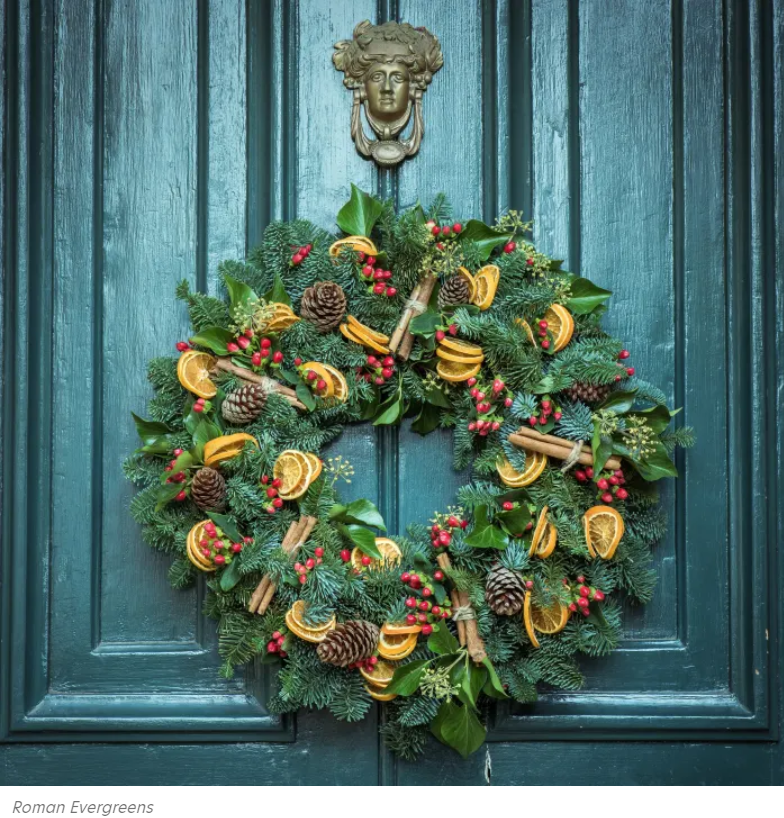
𝟒. 𝐓𝐡𝐞 𝐑𝐨𝐦𝐚𝐧𝐬 𝐌𝐚𝐝𝐞 𝐋𝐚𝐮𝐫𝐞𝐥 𝐖𝐫𝐞𝐚𝐭𝐡𝐬
𝐋𝐚𝐮𝐫𝐞𝐥 𝐨𝐫 𝐛𝐚𝐲 𝐥𝐞𝐚𝐯𝐞𝐬 𝐰𝐞𝐫𝐞 𝐩𝐨𝐩𝐮𝐥𝐚𝐫 𝐰𝐢𝐭𝐡 𝐭𝐡𝐞 𝐩𝐚𝐠𝐚𝐧 𝐑𝐨𝐦𝐚𝐧𝐬 𝐛𝐞𝐜𝐚𝐮𝐬𝐞 𝐭𝐡𝐞 𝐥𝐞𝐚𝐯𝐞𝐬 𝐰𝐞𝐫𝐞 𝐬𝐚𝐜𝐫𝐞𝐝 𝐭𝐨 𝐀𝐩𝐨𝐥𝐥𝐨, 𝐭𝐡𝐞 𝐬𝐮𝐧 𝐠𝐨𝐝.
𝐓𝐡𝐞 𝐚𝐧𝐜𝐢𝐞𝐧𝐭 𝐑𝐨𝐦𝐚𝐧𝐬 𝐮𝐬𝐞𝐝 𝐝𝐞𝐜𝐨𝐫𝐚𝐭𝐢𝐯𝐞 𝐰𝐫𝐞𝐚𝐭𝐡𝐬, 𝐦𝐚𝐝𝐞 𝐟𝐫𝐨𝐦 𝐥𝐚𝐮𝐫𝐞𝐥 𝐰𝐫𝐞𝐚𝐭𝐡𝐬 𝐚𝐬 𝐚 𝐬𝐢𝐠𝐧 𝐨𝐟 𝐯𝐢𝐜𝐭𝐨𝐫𝐲, 𝐚𝐧𝐝 𝐢𝐭 𝐢𝐬 𝐛𝐞𝐥𝐢𝐞𝐯𝐞𝐝 𝐭𝐡𝐚𝐭 𝐭𝐡𝐢𝐬 𝐢𝐬 𝐰𝐡𝐞𝐫𝐞 𝐭𝐡𝐞 𝐬𝐞𝐚𝐬𝐨𝐧𝐚𝐥 𝐡𝐚𝐧𝐠𝐢𝐧𝐠 𝐨𝐟 𝐰𝐫𝐞𝐚𝐭𝐡𝐬 𝐨𝐧 𝐝𝐨𝐨𝐫𝐬 𝐜𝐚𝐦𝐞 𝐟𝐫𝐨𝐦.
𝐈𝐧 𝐧𝐨𝐫𝐭𝐡𝐞𝐫𝐧 𝐄𝐮𝐫𝐨𝐩𝐞, 𝐥𝐚𝐮𝐫𝐞𝐥 𝐥𝐞𝐚𝐯𝐞𝐬 𝐰𝐞𝐫𝐞 𝐧𝐨𝐭 𝐜𝐨𝐦𝐦𝐨𝐧𝐩𝐥𝐚𝐜𝐞, 𝐚𝐧𝐝 𝐢𝐧𝐬𝐭𝐞𝐚𝐝, 𝐞𝐯𝐞𝐫𝐠𝐫𝐞𝐞𝐧 𝐛𝐫𝐚𝐧𝐜𝐡𝐞𝐬 𝐰𝐞𝐫𝐞 𝐠𝐚𝐭𝐡𝐞𝐫𝐞𝐝 𝐚𝐧𝐝 𝐮𝐬𝐞𝐝 𝐭𝐨 𝐝𝐞𝐜𝐨𝐫𝐚𝐭𝐞 𝐡𝐨𝐮𝐬𝐞𝐬 𝐚𝐭 𝐂𝐡𝐫𝐢𝐬𝐭𝐦𝐚𝐬, 𝐞𝐢𝐭𝐡𝐞𝐫 𝐚𝐬 𝐬𝐰𝐚𝐠𝐬 𝐨𝐫 𝐬𝐡𝐚𝐩𝐞𝐝 𝐢𝐧𝐭𝐨 𝐰𝐫𝐞𝐚𝐭𝐡𝐬.
𝐏𝐫𝐨𝐛𝐚𝐛𝐥𝐲 𝐭𝐡𝐞 𝐦𝐨𝐬𝐭 𝐜𝐨𝐦𝐦𝐨𝐧 𝐞𝐯𝐞𝐫𝐠𝐫𝐞𝐞𝐧 𝐮𝐬𝐞𝐝 𝐭𝐨𝐝𝐚𝐲 𝐢𝐬 𝐭𝐡𝐞 𝐂𝐡𝐫𝐢𝐬𝐭𝐦𝐚𝐬 𝐭𝐫𝐞𝐞, 𝐰𝐡𝐨𝐬𝐞 𝐨𝐫𝐢𝐠𝐢𝐧𝐬 𝐚𝐫𝐞 𝐦𝐨𝐫𝐞 𝐕𝐢𝐜𝐭𝐨𝐫𝐢𝐚𝐧 𝐭𝐡𝐚𝐧 𝐏𝐚𝐠𝐚𝐧, 𝐛𝐮𝐭 𝐰𝐫𝐞𝐚𝐭𝐡𝐬 𝐚𝐧𝐝 𝐬𝐰𝐚𝐠𝐬 𝐬𝐭𝐢𝐥𝐥 𝐩𝐥𝐚𝐲 𝐚𝐧 𝐢𝐦𝐩𝐨𝐫𝐭𝐚𝐧𝐭 𝐩𝐚𝐫𝐭 𝐨𝐟 𝐨𝐮𝐫 𝐝𝐞𝐜𝐨𝐫𝐚𝐭𝐢𝐧𝐠, 𝐞𝐯𝐞𝐧 𝐭𝐡𝐨𝐮𝐠𝐡 𝐭𝐡𝐞𝐲 𝐚𝐫𝐞 𝐧𝐨𝐰𝐚𝐝𝐚𝐲𝐬 𝐨𝐟𝐭𝐞𝐧 𝐦𝐚𝐝𝐞 𝐟𝐫𝐨𝐦 𝐚𝐫𝐭𝐢𝐟𝐢𝐜𝐢𝐚𝐥 𝐦𝐚𝐭𝐞𝐫𝐢𝐚𝐥𝐬.
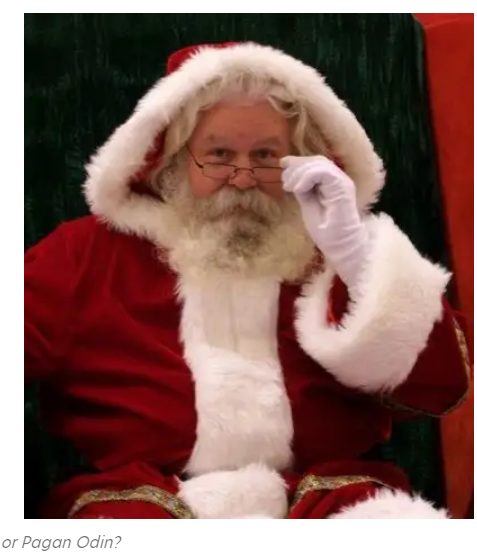
𝟓. 𝐓𝐡𝐞 𝐏𝐚𝐠𝐚𝐧 𝐆𝐨𝐝 𝐎𝐝𝐢𝐧
𝐃𝐞𝐬𝐩𝐢𝐭𝐞 𝐭𝐡𝐞 𝐟𝐚𝐜𝐭 𝐭𝐡𝐚𝐭 𝐨𝐮𝐫 𝐦𝐨𝐝𝐞𝐫𝐧-𝐝𝐚𝐲 𝐢𝐦𝐚𝐠𝐞 𝐨𝐟 𝐅𝐚𝐭𝐡𝐞𝐫 𝐂𝐡𝐫𝐢𝐬𝐭𝐦𝐚𝐬 𝐡𝐚𝐬 𝐥𝐚𝐫𝐠𝐞𝐥𝐲 𝐛𝐞𝐞𝐧 𝐬𝐡𝐚𝐩𝐞𝐝 𝐛𝐲 𝐚 𝟏𝟗𝟑𝟎𝐬 𝐂𝐨𝐜𝐚-𝐂𝐨𝐥𝐚 𝐚𝐝𝐯𝐞𝐫𝐭𝐢𝐬𝐢𝐧𝐠 𝐜𝐚𝐦𝐩𝐚𝐢𝐠𝐧, 𝐡𝐞 𝐦𝐨𝐬𝐭 𝐝𝐞𝐟𝐢𝐧𝐢𝐭𝐞𝐥𝐲 𝐡𝐚𝐬 𝐏𝐚𝐠𝐚𝐧 𝐫𝐨𝐨𝐭𝐬.
𝐂𝐡𝐢𝐥𝐝𝐫𝐞𝐧 𝐚𝐥𝐥 𝐨𝐯𝐞𝐫 𝐭𝐡𝐞 𝐰𝐨𝐫𝐥𝐝 𝐚𝐫𝐞 𝐭𝐨𝐥𝐝 𝐭𝐡𝐚𝐭 𝐅𝐚𝐭𝐡𝐞𝐫 𝐂𝐡𝐫𝐢𝐬𝐭𝐦𝐚𝐬 𝐝𝐞𝐯𝐞𝐥𝐨𝐩𝐞𝐝 𝐟𝐫𝐨𝐦 𝐒𝐭. 𝐍𝐢𝐜𝐡𝐨𝐥𝐚𝐬, 𝐛𝐮𝐭 𝐭𝐡𝐨𝐬𝐞 𝐩𝐞𝐨𝐩𝐥𝐞 𝐰𝐡𝐨 𝐟𝐨𝐥𝐥𝐨𝐰 𝐏𝐚𝐠𝐚𝐧𝐢𝐬𝐦 𝐤𝐧𝐨𝐰 𝐭𝐡𝐞𝐫𝐞 𝐢𝐬 𝐦𝐨𝐫𝐞 𝐭𝐨 𝐭𝐡𝐞 𝐬𝐭𝐨𝐫𝐲 𝐭𝐡𝐚𝐧 𝐭𝐡𝐚𝐭. 𝐓𝐡𝐞𝐫𝐞 𝐰𝐚𝐬 𝐚 𝐏𝐚𝐠𝐚𝐧 𝐠𝐨𝐝 𝐧𝐚𝐦𝐞𝐝 𝐎𝐝𝐢𝐧, 𝐨𝐟𝐭𝐞𝐧 𝐝𝐞𝐩𝐢𝐜𝐭𝐞𝐝 𝐚𝐬 𝐚 𝐜𝐡𝐮𝐛𝐛𝐲 𝐨𝐥𝐝 𝐦𝐚𝐧 𝐰𝐢𝐭𝐡 𝐚 𝐰𝐡𝐢𝐭𝐞 𝐛𝐞𝐚𝐫𝐝 𝐰𝐡𝐨 𝐰𝐨𝐫𝐞 𝐚 𝐥𝐨𝐧𝐠 𝐟𝐥𝐨𝐰𝐢𝐧𝐠 𝐜𝐥𝐨𝐚𝐤.
𝐈𝐭 𝐢𝐬, 𝐭𝐡𝐞𝐫𝐞𝐟𝐨𝐫𝐞, 𝐚 𝐜𝐨𝐦𝐛𝐢𝐧𝐚𝐭𝐢𝐨𝐧 𝐨𝐟 𝐭𝐡𝐞𝐬𝐞 𝐭𝐰𝐨 𝐜𝐡𝐚𝐫𝐚𝐜𝐭𝐞𝐫𝐬, 𝐚𝐧𝐝 𝐚 𝐥𝐢𝐛𝐞𝐫𝐚𝐥 𝐬𝐩𝐫𝐢𝐧𝐤𝐥𝐢𝐧𝐠 𝐨𝐟 𝐂𝐨𝐜𝐚-𝐂𝐨𝐥𝐚 𝐚𝐝𝐯𝐞𝐫𝐭𝐢𝐬𝐢𝐧𝐠 𝐭𝐡𝐚𝐭 𝐡𝐚𝐬 𝐫𝐞𝐬𝐮𝐥𝐭𝐞𝐝 𝐢𝐧 𝐰𝐡𝐨 𝐰𝐞 𝐧𝐨𝐰 𝐜𝐚𝐥𝐥 𝐅𝐚𝐭𝐡𝐞𝐫 𝐂𝐡𝐫𝐢𝐬𝐭𝐦𝐚𝐬 𝐨𝐫 𝐒𝐚𝐧𝐭𝐚 𝐂𝐥𝐚𝐮𝐬.

𝟔. 𝐓𝐡𝐞 𝐑𝐨𝐦𝐚𝐧𝐬 𝐆𝐚𝐯𝐞 𝐆𝐢𝐟𝐭𝐬 𝐚𝐭 𝐒𝐚𝐭𝐮𝐫𝐧𝐚𝐥𝐢𝐚
𝐓𝐡𝐞 𝐜𝐮𝐬𝐭𝐨𝐦 𝐨𝐟 𝐠𝐢𝐯𝐢𝐧𝐠 𝐩𝐫𝐞𝐬𝐞𝐧𝐭𝐬 𝐚𝐭 𝐂𝐡𝐫𝐢𝐬𝐭𝐦𝐚𝐬 𝐨𝐫𝐢𝐠𝐢𝐧𝐚𝐭𝐞𝐝 𝐟𝐫𝐨𝐦 𝐒𝐚𝐭𝐮𝐫𝐧𝐚𝐥𝐢𝐚, 𝐭𝐡𝐞 𝐑𝐨𝐦𝐚𝐧 𝐟𝐞𝐚𝐬𝐭 𝐨𝐟 𝐒𝐚𝐭𝐮𝐫𝐧.
𝐓𝐡𝐞 𝐠𝐢𝐟𝐭𝐬 𝐭𝐡𝐚𝐭 𝐭𝐡𝐞 𝐑𝐨𝐦𝐚𝐧𝐬 𝐠𝐚𝐯𝐞 𝐭𝐨 𝐞𝐚𝐜𝐡 𝐨𝐭𝐡𝐞𝐫 𝐰𝐞𝐫𝐞 𝐬𝐦𝐚𝐥𝐥 𝐚𝐧𝐝 𝐠𝐢𝐯𝐞𝐧 𝐟𝐨𝐫 𝐥𝐮𝐜𝐤. 𝐂𝐡𝐚𝐫𝐢𝐭𝐲 𝐭𝐨𝐰𝐚𝐫𝐝𝐬 𝐭𝐡𝐨𝐬𝐞 𝐰𝐡𝐨 𝐰𝐞𝐫𝐞 𝐥𝐞𝐬𝐬 𝐟𝐨𝐫𝐭𝐮𝐧𝐚𝐭𝐞 𝐰𝐚𝐬 𝐚𝐥𝐬𝐨 𝐯𝐞𝐫𝐲 𝐩𝐨𝐩𝐮𝐥𝐚𝐫 𝐚𝐭 𝐭𝐡𝐢𝐬 𝐭𝐢𝐦𝐞 𝐨𝐟 𝐲𝐞𝐚𝐫.
𝐓𝐡𝐞 𝐡𝐮𝐦𝐛𝐥𝐞 𝐛𝐞𝐠𝐢𝐧𝐧𝐢𝐧𝐠 𝐨𝐟 𝐠𝐢𝐟𝐭-𝐠𝐢𝐯𝐢𝐧𝐠 𝐡𝐚𝐬 𝐝𝐞𝐯𝐞𝐥𝐨𝐩𝐞𝐝 𝐨𝐯𝐞𝐫 𝐭𝐡𝐞 𝐲𝐞𝐚𝐫𝐬 𝐚𝐧𝐝 𝐢𝐬 𝐧𝐨𝐰 𝐚 𝐦𝐮𝐥𝐭𝐢-𝐦𝐢𝐥𝐥𝐢𝐨𝐧-𝐩𝐨𝐮𝐧𝐝 𝐛𝐮𝐬𝐢𝐧𝐞𝐬𝐬, 𝐜𝐚𝐮𝐬𝐢𝐧𝐠 𝐦𝐚𝐧𝐲 𝐩𝐞𝐨𝐩𝐥𝐞 𝐭𝐨 𝐬𝐚𝐲 𝐭𝐡𝐚𝐭 𝐭𝐡𝐞 𝐚𝐫𝐭 𝐨𝐟 𝐠𝐢𝐟𝐭-𝐠𝐢𝐯𝐢𝐧𝐠 𝐡𝐚𝐬 𝐛𝐞𝐞𝐧 𝐫𝐞𝐩𝐥𝐚𝐜𝐞𝐝 𝐛𝐲 𝐦𝐚𝐬𝐬 𝐜𝐨𝐧𝐬𝐮𝐦𝐞𝐫𝐢𝐬𝐦 𝐚𝐧𝐝 𝐠𝐫𝐞𝐞𝐝.

𝟕. 𝐀𝐧𝐠𝐥𝐨-𝐒𝐚𝐱𝐨𝐧 𝐖𝐚𝐬𝐬𝐚𝐢𝐥𝐢𝐧𝐠
𝐖𝐚𝐬𝐬𝐚𝐢𝐥𝐢𝐧𝐠 𝐢𝐬 𝐚𝐧 𝐚𝐧𝐜𝐢𝐞𝐧𝐭 𝐜𝐮𝐬𝐭𝐨𝐦 𝐭𝐡𝐚𝐭 𝐢𝐬 𝐧𝐨𝐭 𝐬𝐞𝐞𝐧 𝐯𝐞𝐫𝐲 𝐨𝐟𝐭𝐞𝐧 𝐭𝐨𝐝𝐚𝐲.
𝐓𝐡𝐞 𝐰𝐨𝐫𝐝 𝐝𝐞𝐫𝐢𝐯𝐞𝐬 𝐟𝐫𝐨𝐦 𝐭𝐡𝐞 𝐀𝐧𝐠𝐥𝐨-𝐒𝐚𝐱𝐨𝐧 𝐩𝐡𝐫𝐚𝐬𝐞 ‘𝐰𝐚𝐞𝐬 𝐡𝐚𝐞𝐥’, 𝐰𝐡𝐢𝐜𝐡 𝐭𝐫𝐚𝐧𝐬𝐥𝐚𝐭𝐞𝐬 𝐭𝐨 ‘𝐠𝐨𝐨𝐝 𝐡𝐞𝐚𝐥𝐭𝐡’.
𝐓𝐡𝐞 𝐰𝐚𝐬𝐬𝐚𝐢𝐥 𝐝𝐫𝐢𝐧𝐤 𝐰𝐚𝐬 𝐨𝐫𝐢𝐠𝐢𝐧𝐚𝐥𝐥𝐲 𝐦𝐚𝐝𝐞 𝐟𝐫𝐨𝐦 𝐦𝐮𝐥𝐥𝐞𝐝 𝐚𝐥𝐞, 𝐜𝐮𝐫𝐝𝐥𝐞𝐝 𝐜𝐫𝐞𝐚𝐦, 𝐫𝐨𝐚𝐬𝐭𝐞𝐝 𝐚𝐩𝐩𝐥𝐞𝐬, 𝐞𝐠𝐠𝐬, 𝐬𝐩𝐢𝐜𝐞𝐬, 𝐚𝐧𝐝 𝐬𝐮𝐠𝐚𝐫, 𝐚𝐧𝐝 𝐰𝐚𝐬 𝐬𝐞𝐫𝐯𝐞𝐝 𝐟𝐫𝐨𝐦 𝐥𝐚𝐫𝐠𝐞 𝐬𝐢𝐥𝐯𝐞𝐫 𝐛𝐨𝐰𝐥𝐬, 𝐦𝐚𝐲 𝐛𝐞 𝐡𝐨𝐥𝐝𝐢𝐧𝐠 𝐚𝐬 𝐦𝐮𝐜𝐡 𝐚𝐬 𝐭𝐞𝐧 𝐠𝐚𝐥𝐥𝐨𝐧𝐬.
𝐀 𝐦𝐨𝐝𝐞𝐫𝐧-𝐝𝐚𝐲 𝐚𝐥𝐭𝐞𝐫𝐧𝐚𝐭𝐢𝐯𝐞 𝐭𝐨 𝐭𝐡𝐢𝐬 𝐰𝐨𝐮𝐥𝐝 𝐛𝐞 𝐦𝐮𝐥𝐥𝐞𝐝 𝐰𝐢𝐧𝐞, 𝐫𝐞𝐝 𝐰𝐢𝐧𝐞, 𝐚𝐧𝐝 𝐬𝐩𝐢𝐜𝐞𝐬 𝐭𝐡𝐚𝐭 𝐢𝐬 𝐬𝐞𝐫𝐯𝐞𝐝 𝐡𝐨𝐭.

𝟖. 𝐏𝐚𝐠𝐚𝐧𝐬 𝐋𝐨𝐯𝐞𝐝 𝐆𝐫𝐞𝐞𝐧 𝐋𝐞𝐚𝐯𝐞𝐬 𝐚𝐧𝐝 𝐑𝐞𝐝 𝐁𝐞𝐫𝐫𝐢𝐞𝐬
𝐓𝐡𝐞 𝐭𝐫𝐚𝐝𝐢𝐭𝐢𝐨𝐧𝐚𝐥 𝐂𝐡𝐫𝐢𝐬𝐭𝐦𝐚𝐬 𝐜𝐨𝐥𝐨𝐫𝐬 𝐨𝐟 𝐫𝐞𝐝 𝐚𝐧𝐝 𝐠𝐫𝐞𝐞𝐧 𝐚𝐫𝐞 𝐜𝐨𝐦𝐩𝐥𝐞𝐦𝐞𝐧𝐭𝐚𝐫𝐲 𝐜𝐨𝐥𝐨𝐫𝐬 𝐭𝐡𝐚𝐭 𝐫𝐞𝐩𝐫𝐞𝐬𝐞𝐧𝐭 𝐟𝐞𝐫𝐭𝐢𝐥𝐢𝐭𝐲.
𝐏𝐚𝐠𝐚𝐧-𝐝𝐞𝐫𝐢𝐯𝐞𝐝 𝐝𝐞𝐜𝐨𝐫𝐚𝐭𝐢𝐨𝐧𝐬 𝐭𝐡𝐚𝐭 𝐚𝐫𝐞 𝐬𝐭𝐢𝐥𝐥 𝐬𝐞𝐞𝐧 𝐚𝐭 𝐂𝐡𝐫𝐢𝐬𝐭𝐦𝐚𝐬 𝐭𝐢𝐦𝐞 𝐢𝐧𝐜𝐥𝐮𝐝𝐞 𝐭𝐡𝐞 𝐠𝐫𝐞𝐞𝐧 𝐥𝐞𝐚𝐯𝐞𝐬 𝐚𝐧𝐝 𝐫𝐞𝐝 𝐛𝐞𝐫𝐫𝐢𝐞𝐬 𝐨𝐟 𝐡𝐨𝐥𝐥𝐲, 𝐦𝐢𝐬𝐭𝐥𝐞𝐭𝐨𝐞, 𝐚𝐧𝐝 𝐰𝐫𝐞𝐚𝐭𝐡𝐬.
𝐑𝐞𝐝 𝐚𝐧𝐝 𝐠𝐫𝐞𝐞𝐧 𝐚𝐫𝐞 𝐭𝐡𝐞 𝐭𝐫𝐚𝐝𝐢𝐭𝐢𝐨𝐧𝐚𝐥 𝐜𝐨𝐥𝐨𝐫𝐬 𝐟𝐨𝐫 𝐂𝐡𝐫𝐢𝐬𝐭𝐦𝐚𝐬 𝐭𝐫𝐞𝐞 𝐛𝐚𝐮𝐛𝐥𝐞𝐬, 𝐛𝐮𝐭 𝐢𝐧 𝐫𝐞𝐜𝐞𝐧𝐭 𝐲𝐞𝐚𝐫𝐬 𝐦𝐚𝐧𝐲 𝐦𝐨𝐫𝐞 𝐜𝐨𝐥𝐨𝐫𝐬 𝐡𝐚𝐯𝐞 𝐛𝐞𝐜𝐨𝐦𝐞 𝐚𝐯𝐚𝐢𝐥𝐚𝐛𝐥𝐞, 𝐨𝐟𝐭𝐞𝐧 𝐜𝐡𝐚𝐧𝐠𝐢𝐧𝐠 𝐲𝐞𝐚𝐫𝐥𝐲 𝐰𝐢𝐭𝐡 𝐭𝐡𝐞 𝐥𝐚𝐭𝐞𝐬𝐭 𝐟𝐚𝐬𝐡𝐢𝐨𝐧𝐬. 𝐈𝐧 𝐫𝐞𝐜𝐞𝐧𝐭 𝐲𝐞𝐚𝐫𝐬 𝐭𝐮𝐫𝐪𝐮𝐨𝐢𝐬𝐞, 𝐩𝐢𝐧𝐤, 𝐩𝐮𝐫𝐩𝐥𝐞, 𝐚𝐧𝐝 𝐨𝐫𝐚𝐧𝐠𝐞 𝐡𝐚𝐯𝐞 𝐛𝐞𝐞𝐧 𝐬𝐞𝐞𝐧 𝐨𝐧 𝐭𝐡𝐞 𝐛𝐞𝐬𝐭-𝐝𝐫𝐞𝐬𝐬𝐞𝐝 𝐭𝐫𝐞𝐞𝐬.

𝟗. 𝐓𝐡𝐞 𝐏𝐚𝐠𝐚𝐧𝐬 𝐒𝐚𝐧𝐠 𝐚𝐭 𝐭𝐡𝐞 𝐖𝐢𝐧𝐭𝐞𝐫 𝐒𝐨𝐥𝐬𝐭𝐢𝐜𝐞
𝐂𝐚𝐫𝐨𝐥𝐬 𝐡𝐚𝐯𝐞 𝐛𝐞𝐞𝐧 𝐬𝐮𝐧𝐠 𝐟𝐨𝐫 𝐭𝐡𝐨𝐮𝐬𝐚𝐧𝐝𝐬 𝐨𝐟 𝐲𝐞𝐚𝐫𝐬, 𝐛𝐮𝐭 𝐭𝐡𝐞𝐲 𝐰𝐞𝐫𝐞 𝐧𝐨𝐭 𝐨𝐫𝐢𝐠𝐢𝐧𝐚𝐥𝐥𝐲 𝐂𝐡𝐫𝐢𝐬𝐭𝐦𝐚𝐬 𝐜𝐚𝐫𝐨𝐥𝐬.
𝐎𝐫𝐢𝐠𝐢𝐧𝐚𝐥𝐥𝐲, 𝐭𝐡𝐞𝐲 𝐰𝐞𝐫𝐞 𝐏𝐚𝐠𝐚𝐧 𝐬𝐨𝐧𝐠𝐬, 𝐭𝐡𝐚𝐭 𝐰𝐞𝐫𝐞 𝐬𝐮𝐧𝐠 𝐚𝐭 𝐭𝐡𝐞 𝐜𝐞𝐥𝐞𝐛𝐫𝐚𝐭𝐢𝐨𝐧𝐬 𝐬𝐮𝐫𝐫𝐨𝐮𝐧𝐝𝐢𝐧𝐠 𝐭𝐡𝐞 𝐖𝐢𝐧𝐭𝐞𝐫 𝐒𝐨𝐥𝐬𝐭𝐢𝐜𝐞 𝐟𝐞𝐬𝐭𝐢𝐯𝐚𝐥.
𝐓𝐡𝐞 𝐰𝐨𝐫𝐝 ‘𝐜𝐚𝐫𝐨𝐥’ 𝐚𝐜𝐭𝐮𝐚𝐥𝐥𝐲 𝐦𝐞𝐚𝐧𝐬 𝐚 𝐬𝐨𝐧𝐠 𝐨𝐫 𝐝𝐚𝐧𝐜𝐞 𝐨𝐟 𝐣𝐨𝐲 𝐚𝐧𝐝 𝐩𝐫𝐚𝐢𝐬𝐞! 𝐓𝐡𝐞𝐲 𝐰𝐞𝐫𝐞 𝐰𝐫𝐢𝐭𝐭𝐞𝐧 𝐚𝐧𝐝 𝐬𝐮𝐧𝐠 𝐝𝐮𝐫𝐢𝐧𝐠 𝐚𝐥𝐥 𝐟𝐨𝐮𝐫 𝐬𝐞𝐚𝐬𝐨𝐧𝐬, 𝐛𝐮𝐭 𝐢𝐭 𝐰𝐚𝐬 𝐨𝐧𝐥𝐲 𝐭𝐡𝐞 𝐭𝐫𝐚𝐝𝐢𝐭𝐢𝐨𝐧 𝐨𝐟 𝐬𝐢𝐧𝐠𝐢𝐧𝐠 𝐭𝐡𝐞𝐦 𝐚𝐭 𝐂𝐡𝐫𝐢𝐬𝐭𝐦𝐚𝐬 𝐭𝐡𝐚𝐭 𝐬𝐮𝐫𝐯𝐢𝐯𝐞𝐝!
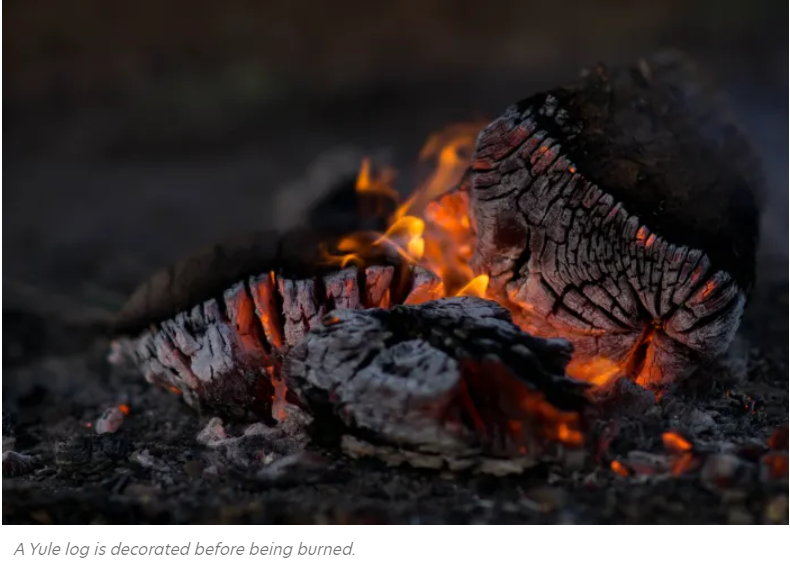
𝟏𝟎. 𝐄𝐮𝐫𝐨𝐩𝐞𝐚𝐧𝐬 𝐁𝐮𝐫𝐧𝐞𝐝 𝐚 𝐘𝐮𝐥𝐞 𝐋𝐨𝐠
𝐓𝐡𝐞 𝐘𝐮𝐥𝐞 𝐥𝐨𝐠 𝐢𝐬 𝐚 𝐫𝐞𝐦𝐢𝐧𝐝𝐞𝐫 𝐨𝐟 𝐭𝐡𝐞 𝐭𝐢𝐦𝐞𝐬 𝐰𝐡𝐞𝐧 𝐄𝐮𝐫𝐨𝐩𝐞𝐚𝐧 𝐩𝐚𝐠𝐚𝐧𝐬 𝐰𝐨𝐮𝐥𝐝 𝐡𝐚𝐯𝐞 𝐛𝐨𝐧𝐟𝐢𝐫𝐞𝐬 𝐝𝐮𝐫𝐢𝐧𝐠 𝐰𝐢𝐧𝐭𝐞𝐫 𝐬𝐨𝐥𝐬𝐭𝐢𝐜𝐞, 𝐭𝐡𝐞𝐫𝐞𝐛𝐲 𝐬𝐲𝐦𝐛𝐨𝐥𝐢𝐬𝐢𝐧𝐠 𝐭𝐡𝐞 𝐫𝐞𝐭𝐮𝐫𝐧 𝐨𝐟 𝐭𝐡𝐞 𝐬𝐮𝐧 𝐰𝐢𝐭𝐡 𝐭𝐡𝐞 𝐝𝐚𝐲𝐬 𝐬𝐭𝐚𝐫𝐭𝐢𝐧𝐠 𝐭𝐨 𝐠𝐞𝐭 𝐥𝐨𝐧𝐠𝐞𝐫 𝐚𝐠𝐚𝐢𝐧.
𝐀𝐜𝐪𝐮𝐢𝐫𝐢𝐧𝐠 𝐚 𝐘𝐮𝐥𝐞 𝐋𝐨𝐠
𝐓𝐡𝐞 𝐘𝐮𝐥𝐞 𝐥𝐨𝐠 𝐩𝐥𝐚𝐲𝐞𝐝 𝐚 𝐦𝐚𝐣𝐨𝐫 𝐫𝐨𝐥𝐞 𝐢𝐧 𝐭𝐡𝐞 𝐘𝐮𝐥𝐞 𝐟𝐞𝐬𝐭𝐢𝐯𝐢𝐭𝐢𝐞𝐬, 𝐰𝐢𝐭𝐡 𝐚 𝐩𝐢𝐞𝐜𝐞 𝐨𝐟 𝐭𝐡𝐞 𝐩𝐫𝐞𝐯𝐢𝐨𝐮𝐬 𝐲𝐞𝐚𝐫’𝐬 𝐥𝐨𝐠 𝐛𝐞𝐢𝐧𝐠 𝐬𝐚𝐯𝐞𝐝 𝐭𝐨 𝐬𝐭𝐚𝐫𝐭 𝐭𝐡𝐞 𝐟𝐢𝐫𝐞 𝐭𝐡𝐞 𝐟𝐨𝐥𝐥𝐨𝐰𝐢𝐧𝐠 𝐲𝐞𝐚𝐫.
𝐓𝐫𝐚𝐝𝐢𝐭𝐢𝐨𝐧𝐚𝐥𝐥𝐲, 𝐢𝐭 𝐰𝐚𝐬 𝐜𝐨𝐧𝐬𝐢𝐝𝐞𝐫𝐞𝐝 𝐮𝐧𝐥𝐮𝐜𝐤𝐲 𝐭𝐨 𝐛𝐮𝐲 𝐚 𝐥𝐨𝐠 𝐚𝐧𝐝 𝐢𝐧𝐬𝐭𝐞𝐚𝐝 𝐢𝐭 𝐰𝐚𝐬 𝐡𝐚𝐫𝐯𝐞𝐬𝐭𝐞𝐝 𝐟𝐫𝐨𝐦 𝐭𝐡𝐞 𝐡𝐨𝐮𝐬𝐞𝐡𝐨𝐥𝐝𝐞𝐫’𝐬 𝐥𝐚𝐧𝐝 𝐨𝐫 𝐫𝐞𝐜𝐞𝐢𝐯𝐞𝐝 𝐚𝐬 𝐚 𝐠𝐢𝐟𝐭.
𝐎𝐧𝐜𝐞 𝐛𝐫𝐨𝐮𝐠𝐡𝐭 𝐢𝐧𝐭𝐨 𝐭𝐡𝐞 𝐡𝐨𝐮𝐬𝐞 𝐚𝐧𝐝 𝐩𝐥𝐚𝐜𝐞𝐝 𝐜𝐞𝐫𝐞𝐦𝐨𝐧𝐢𝐨𝐮𝐬𝐥𝐲 𝐢𝐧 𝐭𝐡𝐞 𝐟𝐢𝐫𝐞𝐩𝐥𝐚𝐜𝐞 𝐢𝐭 𝐰𝐚𝐬 𝐝𝐞𝐜𝐨𝐫𝐚𝐭𝐞𝐝 𝐰𝐢𝐭𝐡 𝐠𝐫𝐞𝐞𝐧𝐞𝐫𝐲, 𝐬𝐦𝐨𝐭𝐡𝐞𝐫𝐞𝐝 𝐰𝐢𝐭𝐡 𝐚𝐥𝐜𝐨𝐡𝐨𝐥, 𝐚𝐧𝐝 𝐝𝐮𝐬𝐭𝐞𝐝 𝐰𝐢𝐭𝐡 𝐟𝐥𝐨𝐮𝐫 𝐛𝐞𝐟𝐨𝐫𝐞 𝐛𝐞𝐢𝐧𝐠 𝐬𝐞𝐭 𝐨𝐧 𝐟𝐢𝐫𝐞. 𝐓𝐡𝐞 𝐥𝐨𝐠 𝐰𝐨𝐮𝐥𝐝 𝐭𝐡𝐞𝐧 𝐛𝐮𝐫𝐧 𝐚𝐥𝐥 𝐧𝐢𝐠𝐡𝐭, 𝐛𝐞𝐟𝐨𝐫𝐞 𝐬𝐦𝐨𝐮𝐥𝐝𝐞𝐫𝐢𝐧𝐠 𝐟𝐨𝐫 𝐭𝐰𝐞𝐥𝐯𝐞 𝐝𝐚𝐲𝐬.
𝐘𝐮𝐥𝐞 𝐋𝐨𝐠 𝐌𝐲𝐭𝐡𝐨𝐥𝐨𝐠𝐲
𝐂𝐞𝐥𝐭𝐢𝐜 𝐦𝐲𝐭𝐡𝐨𝐥𝐨𝐠𝐲 𝐭𝐨𝐥𝐝 𝐭𝐡𝐞 𝐬𝐭𝐨𝐫𝐢𝐞𝐬 𝐨𝐟 𝐭𝐡𝐞 𝐎𝐚𝐤 𝐊𝐢𝐧𝐠 𝐚𝐧𝐝 𝐇𝐨𝐥𝐥𝐲 𝐊𝐢𝐧𝐠, 𝐰𝐢𝐭𝐡 𝐭𝐡𝐞 𝐎𝐚𝐤 𝐫𝐞𝐩𝐫𝐞𝐬𝐞𝐧𝐭𝐢𝐧𝐠 𝐭𝐡𝐞 𝐭𝐢𝐦𝐞 𝐟𝐫𝐨𝐦 𝐭𝐡𝐞 𝐖𝐢𝐧𝐭𝐞𝐫 𝐒𝐨𝐥𝐬𝐭𝐢𝐜𝐞 𝐭𝐨 𝐒𝐮𝐦𝐦𝐞𝐫 𝐒𝐨𝐥𝐬𝐭𝐢𝐜𝐞, 𝐚𝐧𝐝 𝐭𝐡𝐞 𝐇𝐨𝐥𝐥𝐲 𝐫𝐞𝐩𝐫𝐞𝐬𝐞𝐧𝐭𝐢𝐧𝐠 𝐭𝐡𝐞 𝐭𝐢𝐦𝐞 𝐟𝐫𝐨𝐦 𝐭𝐡𝐞 𝐒𝐮𝐦𝐦𝐞𝐫 𝐒𝐨𝐥𝐬𝐭𝐢𝐜𝐞 𝐭𝐨 𝐖𝐢𝐧𝐭𝐞𝐫 𝐒𝐨𝐥𝐬𝐭𝐢𝐜𝐞.
𝐓𝐨𝐝𝐚𝐲, 𝐘𝐮𝐥𝐞 𝐥𝐨𝐠𝐬 𝐚𝐫𝐞 𝐨𝐟𝐭𝐞𝐧 𝐫𝐞𝐩𝐫𝐞𝐬𝐞𝐧𝐭𝐞𝐝 𝐛𝐲 𝐚 𝐜𝐡𝐨𝐜𝐨𝐥𝐚𝐭𝐞-𝐜𝐨𝐯𝐞𝐫𝐞𝐝 𝐒𝐰𝐢𝐬𝐬 𝐫𝐨𝐥𝐥 𝐜𝐚𝐤𝐞, 𝐬𝐩𝐫𝐢𝐧𝐤𝐥𝐞𝐝 𝐰𝐢𝐭𝐡 𝐢𝐜𝐢𝐧𝐠 𝐬𝐮𝐠𝐚𝐫 𝐭𝐨 𝐫𝐞𝐩𝐫𝐞𝐬𝐞𝐧𝐭 𝐭𝐡𝐞 𝐟𝐥𝐨𝐮𝐫 𝐭𝐡𝐚𝐭 𝐰𝐚𝐬 𝐝𝐮𝐬𝐭𝐞𝐝 𝐨𝐧𝐭𝐨 𝐭𝐡𝐞 𝐥𝐨𝐠 𝐛𝐞𝐟𝐨𝐫𝐞 𝐛𝐮𝐫𝐧𝐢𝐧𝐠, 𝐚𝐧𝐝 𝐝𝐞𝐜𝐨𝐫𝐚𝐭𝐞𝐝 𝐰𝐢𝐭𝐡 𝐬𝐦𝐚𝐥𝐥 𝐩𝐥𝐚𝐬𝐭𝐢𝐜 𝐬𝐩𝐫𝐢𝐠𝐬 𝐨𝐟 𝐡𝐨𝐥𝐥𝐲.
𝟏𝟏. 𝐀 𝐏𝐚𝐠𝐚𝐧 𝐇𝐨𝐥𝐢𝐝𝐚𝐲 𝐀𝐝𝐚𝐩𝐭𝐞𝐝 𝐭𝐨 𝐂𝐡𝐫𝐢𝐬𝐭𝐢𝐚𝐧𝐢𝐭𝐲
𝐖𝐢𝐧𝐭𝐞𝐫 𝐒𝐨𝐥𝐬𝐭𝐢𝐜𝐞 𝐰𝐚𝐬 𝐜𝐞𝐥𝐞𝐛𝐫𝐚𝐭𝐞𝐝 𝐚𝐥𝐥 𝐨𝐯𝐞𝐫 𝐄𝐮𝐫𝐨𝐩𝐞, 𝐚𝐧𝐝 𝐚𝐬 𝐧𝐨𝐛𝐨𝐝𝐲 𝐰𝐚𝐬 𝐫𝐞𝐚𝐥𝐥𝐲 𝐬𝐮𝐫𝐞 𝐰𝐡𝐞𝐧 𝐉𝐞𝐬𝐮𝐬 𝐰𝐚𝐬 𝐚𝐜𝐭𝐮𝐚𝐥𝐥𝐲 𝐛𝐨𝐫𝐧, 𝐞𝐚𝐫𝐥𝐲 𝐂𝐡𝐫𝐢𝐬𝐭𝐢𝐚𝐧𝐬 𝐚𝐥𝐭𝐞𝐫𝐞𝐝 𝐭𝐡𝐞𝐢𝐫 𝐞𝐱𝐢𝐬𝐭𝐢𝐧𝐠 𝐏𝐚𝐠𝐚𝐧 𝐟𝐞𝐬𝐭𝐢𝐯𝐢𝐭𝐢𝐞𝐬 𝐭𝐨 𝐜𝐞𝐥𝐞𝐛𝐫𝐚𝐭𝐞 𝐭𝐡𝐞 𝐛𝐢𝐫𝐭𝐡 𝐨𝐟 𝐉𝐞𝐬𝐮𝐬 𝐂𝐡𝐫𝐢𝐬𝐭 𝐝𝐮𝐫𝐢𝐧𝐠 𝐭𝐡𝐞 𝐬𝐚𝐦𝐞 𝐭𝐢𝐦𝐞.
𝐈𝐧 𝐃𝐞𝐜𝐞𝐦𝐛𝐞𝐫 𝐭𝐡𝐞 𝐬𝐮𝐧 𝐚𝐩𝐩𝐞𝐚𝐫𝐬 𝐭𝐨 𝐫𝐢𝐬𝐞 𝐚𝐭 𝐭𝐡𝐞 𝐬𝐚𝐦𝐞 𝐩𝐨𝐢𝐧𝐭 𝐨𝐧 𝐭𝐡𝐞 𝐡𝐨𝐫𝐢𝐳𝐨𝐧 𝐟𝐨𝐫 𝐭𝐡𝐞 𝐭𝐡𝐫𝐞𝐞 𝐜𝐨𝐧𝐬𝐞𝐜𝐮𝐭𝐢𝐯𝐞 𝐝𝐚𝐲𝐬 𝐛𝐞𝐠𝐢𝐧𝐧𝐢𝐧𝐠 𝐨𝐧 𝐭𝐡𝐞 𝟐𝟐𝐧𝐝 𝐚𝐧𝐝 𝐭𝐡𝐞𝐧 𝐦𝐢𝐫𝐚𝐜𝐮𝐥𝐨𝐮𝐬𝐥𝐲 𝐨𝐧 𝐭𝐡𝐞 𝟐𝟓𝐭𝐡 𝐢𝐭 𝐚𝐩𝐩𝐞𝐚𝐫𝐬 𝐭𝐨 𝐦𝐨𝐯𝐞. 𝐎𝐮𝐫 𝐚𝐧𝐜𝐢𝐞𝐧𝐭 𝐚𝐧𝐜𝐞𝐬𝐭𝐨𝐫𝐬 𝐰𝐚𝐭𝐜𝐡𝐞𝐝 𝐭𝐡𝐢𝐬 𝐚𝐧𝐝 𝐜𝐞𝐥𝐞𝐛𝐫𝐚𝐭𝐞𝐝 𝐭𝐡𝐞 𝐟𝐚𝐜𝐭 𝐭𝐡𝐚𝐭 𝐭𝐡𝐞 𝐝𝐚𝐲𝐬 𝐰𝐞𝐫𝐞 𝐧𝐨𝐰 𝐛𝐞𝐠𝐢𝐧𝐧𝐢𝐧𝐠 𝐭𝐨 𝐠𝐞𝐭 𝐥𝐨𝐧𝐠𝐞𝐫 𝐚𝐧𝐝 𝐭𝐡𝐞 𝐝𝐚𝐫𝐤 𝐧𝐢𝐠𝐡𝐭𝐬 𝐬𝐡𝐨𝐫𝐭𝐞𝐫.
𝐈𝐭 𝐢𝐬 𝐡𝐚𝐫𝐝 𝐟𝐨𝐫 𝐮𝐬 𝐭𝐨 𝐮𝐧𝐝𝐞𝐫𝐬𝐭𝐚𝐧𝐝 𝐡𝐨𝐰 𝐢𝐦𝐩𝐨𝐫𝐭𝐚𝐧𝐭 𝐬𝐮𝐧𝐥𝐢𝐠𝐡𝐭 𝐰𝐚𝐬 𝐭𝐨 𝐨𝐮𝐫 𝐚𝐧𝐜𝐞𝐬𝐭𝐨𝐫𝐬, 𝐚𝐧𝐝 𝐡𝐨𝐰 𝐢𝐭 𝐚𝐟𝐟𝐞𝐜𝐭𝐞𝐝 𝐭𝐡𝐞𝐢𝐫 𝐪𝐮𝐚𝐥𝐢𝐭𝐲 𝐨𝐟 𝐥𝐢𝐟𝐞. 𝐓𝐲𝐩𝐢𝐜𝐚𝐥𝐥𝐲 𝐩𝐞𝐨𝐩𝐥𝐞 𝐰𝐨𝐮𝐥𝐝 𝐥𝐢𝐯𝐞 𝐚𝐧𝐝 𝐰𝐨𝐫𝐤 𝐝𝐮𝐫𝐢𝐧𝐠 𝐝𝐚𝐲𝐥𝐢𝐠𝐡𝐭 𝐡𝐨𝐮𝐫𝐬, 𝐬𝐨 𝐭𝐡𝐞 𝐥𝐨𝐧𝐠 𝐚𝐧𝐝 𝐝𝐚𝐫𝐤 𝐰𝐢𝐧𝐭𝐞𝐫 𝐦𝐨𝐧𝐭𝐡𝐬 𝐦𝐮𝐬𝐭 𝐡𝐚𝐯𝐞 𝐬𝐞𝐞𝐦𝐞𝐝 𝐧𝐞𝐯𝐞𝐫-𝐞𝐧𝐝𝐢𝐧𝐠.
𝐀𝐥𝐬𝐨, 𝐭𝐡𝐞𝐲 𝐰𝐨𝐮𝐥𝐝 𝐡𝐚𝐯𝐞 𝐛𝐞𝐞𝐧 𝐫𝐞𝐥𝐲𝐢𝐧𝐠 𝐨𝐧 𝐭𝐡𝐞𝐢𝐫 𝐬𝐭𝐨𝐫𝐞 𝐨𝐟 𝐠𝐫𝐚𝐢𝐧𝐬 𝐚𝐧𝐝 𝐜𝐫𝐨𝐩𝐬 𝐟𝐫𝐨𝐦 𝐭𝐡𝐞 𝐩𝐫𝐞𝐯𝐢𝐨𝐮𝐬 𝐬𝐮𝐦𝐦𝐞𝐫 𝐭𝐨 𝐭𝐢𝐝𝐞 𝐭𝐡𝐞𝐦 𝐨𝐯𝐞𝐫 𝐮𝐧𝐭𝐢𝐥 𝐭𝐡𝐞 𝐟𝐨𝐥𝐥𝐨𝐰𝐢𝐧𝐠 𝐲𝐞𝐚𝐫 𝐚𝐧𝐝 𝐰𝐨𝐮𝐥𝐝 𝐛𝐞 𝐞𝐚𝐠𝐞𝐫 𝐭𝐨 𝐩𝐥𝐚𝐧𝐭 𝐧𝐞𝐰 𝐜𝐫𝐨𝐩𝐬 𝐚𝐧𝐝 𝐫𝐞𝐜𝐞𝐢𝐯𝐞 𝐬𝐨𝐦𝐞 𝐟𝐫𝐞𝐬𝐡 𝐟𝐨𝐨𝐝 𝐭𝐨 𝐞𝐚𝐭.
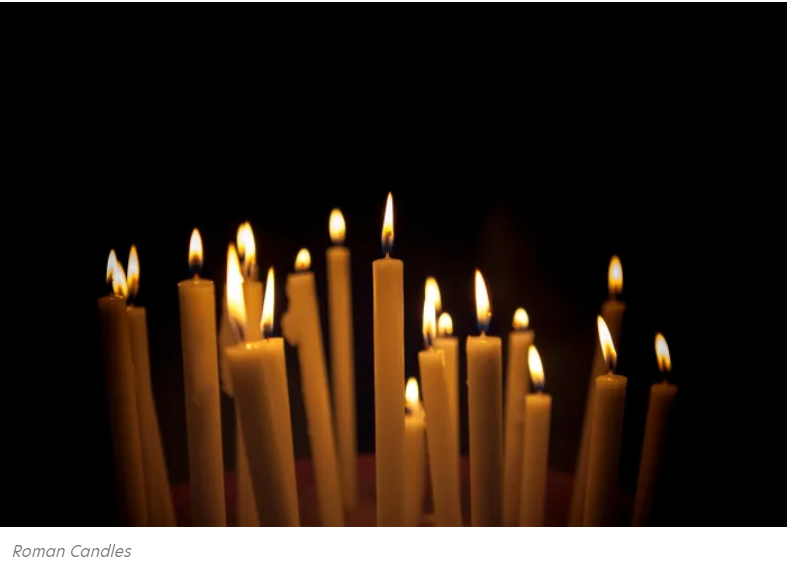
𝟏𝟐. 𝐂𝐚𝐧𝐝𝐥𝐞𝐬 𝐖𝐞𝐫𝐞 𝐔𝐬𝐞𝐝 𝐃𝐮𝐫𝐢𝐧𝐠 𝐒𝐚𝐭𝐮𝐫𝐧𝐚𝐥𝐢𝐚
𝐓𝐡𝐫𝐨𝐮𝐠𝐡𝐨𝐮𝐭 𝐡𝐢𝐬𝐭𝐨𝐫𝐲, 𝐜𝐚𝐧𝐝𝐥𝐞𝐬 𝐡𝐚𝐯𝐞 𝐛𝐞𝐞𝐧 𝐮𝐬𝐞𝐝 𝐭𝐨 𝐰𝐚𝐫𝐝 𝐨𝐟𝐟 𝐝𝐚𝐫𝐤𝐧𝐞𝐬𝐬 𝐚𝐧𝐝 𝐞𝐯𝐢𝐥.
𝐓𝐡𝐞 𝐟𝐢𝐫𝐬𝐭 𝐮𝐬𝐞 𝐨𝐟 𝐜𝐚𝐧𝐝𝐥𝐞𝐬 𝐢𝐧 𝐃𝐞𝐜𝐞𝐦𝐛𝐞𝐫 𝐰𝐚𝐬 𝐝𝐮𝐫𝐢𝐧𝐠 𝐭𝐡𝐞 𝐑𝐨𝐦𝐚𝐧 𝐒𝐚𝐭𝐮𝐫𝐧𝐚𝐥𝐢𝐚 𝐟𝐞𝐬𝐭𝐢𝐯𝐚𝐥, 𝐰𝐡𝐞𝐫𝐞 𝐭𝐚𝐥𝐥 𝐭𝐚𝐩𝐞𝐫𝐬 𝐨𝐟 𝐰𝐚𝐱 𝐰𝐞𝐫𝐞 𝐨𝐟𝐟𝐞𝐫𝐞𝐝 𝐭𝐨 𝐒𝐚𝐭𝐮𝐫𝐧 𝐚𝐬 𝐚 𝐬𝐲𝐦𝐛𝐨𝐥 𝐨𝐟 𝐡𝐢𝐬 𝐥𝐢𝐠𝐡𝐭 𝐚𝐧𝐝 𝐚𝐥𝐬𝐨 𝐠𝐢𝐯𝐞𝐧 𝐚𝐬 𝐚 𝐠𝐢𝐟𝐭 𝐭𝐨 𝐠𝐮𝐞𝐬𝐭𝐬.
𝐓𝐡𝐞 𝐏𝐚𝐠𝐚𝐧𝐬 𝐚𝐥𝐬𝐨 𝐮𝐬𝐞𝐝 𝐜𝐚𝐧𝐝𝐥𝐞𝐬 𝐝𝐮𝐫𝐢𝐧𝐠 𝐭𝐡𝐞𝐢𝐫 𝐘𝐮𝐥𝐞 𝐟𝐞𝐬𝐭𝐢𝐯𝐢𝐭𝐢𝐞𝐬, 𝐰𝐢𝐭𝐡 𝐜𝐚𝐧𝐝𝐥𝐞𝐥𝐢𝐠𝐡𝐭 𝐚𝐧𝐝 𝐛𝐨𝐧𝐟𝐢𝐫𝐞𝐬 𝐛𝐞𝐢𝐧𝐠 𝐮𝐬𝐞𝐝 𝐭𝐨 𝐰𝐞𝐥𝐜𝐨𝐦𝐞 𝐭𝐡𝐞 𝐧𝐢𝐠𝐡𝐭𝐬 𝐛𝐞𝐠𝐢𝐧𝐧𝐢𝐧𝐠 𝐭𝐨 𝐠𝐞𝐭 𝐥𝐢𝐠𝐡𝐭𝐞𝐫.
𝐀𝐬 𝐂𝐡𝐫𝐢𝐬𝐭𝐢𝐚𝐧𝐢𝐭𝐲 𝐛𝐞𝐜𝐚𝐦𝐞 𝐦𝐨𝐫𝐞 𝐰𝐢𝐝𝐞𝐬𝐩𝐫𝐞𝐚𝐝, 𝐜𝐚𝐧𝐝𝐥𝐞𝐬 𝐰𝐞𝐫𝐞 𝐩𝐮𝐭 𝐢𝐧 𝐭𝐡𝐞 𝐟𝐫𝐨𝐧𝐭 𝐰𝐢𝐧𝐝𝐨𝐰𝐬 𝐨𝐟 𝐡𝐨𝐮𝐬𝐞𝐬 𝐢𝐧 𝐨𝐫𝐝𝐞𝐫 𝐭𝐨 𝐠𝐮𝐢𝐝𝐞 𝐉𝐞𝐬𝐮𝐬 𝐚𝐬 𝐡𝐞 𝐰𝐞𝐧𝐭 𝐟𝐫𝐨𝐦 𝐡𝐨𝐮𝐬𝐞 𝐭𝐨 𝐡𝐨𝐮𝐬𝐞 𝐨𝐧 𝐂𝐡𝐫𝐢𝐬𝐭𝐦𝐚𝐬 𝐄𝐯𝐞.
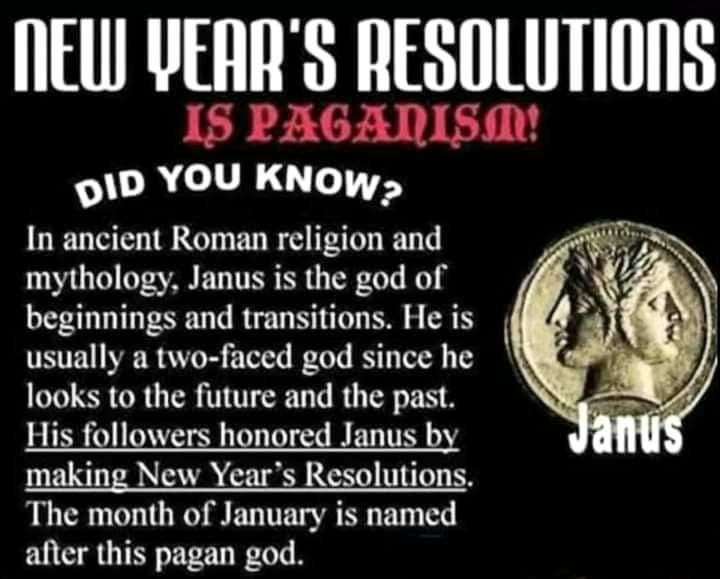
𝐃𝐢𝐝 𝐘𝐨𝐮 𝐑𝐞𝐚𝐥𝐢𝐬𝐞 𝐓𝐡𝐚𝐭 𝐏𝐚𝐠𝐚𝐧 𝐂𝐡𝐫𝐢𝐬𝐭𝐦𝐚𝐬 𝐓𝐫𝐚𝐝𝐢𝐭𝐢𝐨𝐧𝐬 𝐀𝐫𝐞 𝐒𝐭𝐢𝐥𝐥 𝐂𝐞𝐥𝐞𝐛𝐫𝐚𝐭𝐞𝐝 𝐓𝐨𝐝𝐚𝐲?
𝐓𝐞𝐬𝐭𝐢𝐦𝐨𝐧𝐢𝐚𝐥𝐬
𝐈𝐭𝐬 𝐚𝐦𝐚𝐳𝐢𝐧𝐠 𝐡𝐨𝐰 𝐞𝐯𝐞𝐧 𝐚𝐟𝐭𝐞𝐫 𝐫𝐞𝐚𝐝𝐢𝐧𝐠 𝐭𝐡𝐢𝐬, 𝐩𝐞𝐨𝐩𝐥𝐞 𝐥𝐢𝐤𝐞 𝐝𝐞𝐥𝐮𝐬𝐢𝐨𝐧𝐚𝐥 𝐃𝐚𝐧𝐧𝐲 𝐨𝐯𝐞𝐫 𝐡𝐞𝐫𝐞 𝐬𝐭𝐢𝐥𝐥 𝐝𝐨𝐧’𝐭 𝐠𝐞𝐭 “𝐭𝐡𝐞 𝐫𝐞𝐚𝐬𝐨𝐧 𝐟𝐨𝐫 𝐭𝐡𝐞 𝐬𝐞𝐚𝐬𝐨𝐧” – 𝐢𝐭’𝐬 𝐭𝐡𝐞 𝐑𝐨𝐦𝐚𝐧 𝐠𝐨𝐝 𝐒𝐚𝐭𝐮𝐫𝐧. 𝐍𝐨𝐭 𝐉𝐞𝐬𝐮𝐬.
𝐃𝐚𝐧𝐧𝐲 𝐨𝐧 𝐃𝐞𝐜𝐞𝐦𝐛𝐞𝐫 𝟏𝟗, 𝟐𝟎𝟏𝟖:
𝐈’𝐦 𝐚 𝐂𝐡𝐫𝐢𝐬𝐭𝐢𝐚𝐧 𝐚𝐧𝐝 𝐝𝐢𝐝𝐧’𝐭 𝐫𝐞𝐚𝐥𝐢𝐳𝐞 𝐚𝐥𝐥 𝐭𝐡𝐞 𝐏𝐚𝐠𝐚𝐧𝐢𝐬𝐦 𝐚𝐬𝐬𝐨𝐜𝐢𝐚𝐭𝐞𝐝 𝐰𝐢𝐭𝐡 𝐂𝐡𝐫𝐢𝐬𝐭𝐦𝐚𝐬. 𝐈 𝐧𝐞𝐞𝐝 𝐭𝐨 𝐫𝐞𝐞𝐯𝐚𝐥𝐮𝐚𝐭𝐞 𝐡𝐨𝐰 𝐈’𝐦 𝐜𝐞𝐥𝐞𝐛𝐫𝐚𝐭𝐢𝐧𝐠 𝐭𝐡𝐞 𝐡𝐨𝐥𝐢𝐝𝐚𝐲. 𝐃𝐨𝐧’𝐭 𝐰𝐚𝐧𝐭 𝐭𝐨 𝐠𝐢𝐯𝐞 𝐭𝐡𝐞 𝐞𝐧𝐞𝐦𝐲 𝐧𝐨 𝐫𝐞𝐚𝐬𝐨𝐧 𝐭𝐨 𝐭𝐡𝐢𝐧𝐤 𝐭𝐡𝐢𝐬 𝐢𝐬 𝐝𝐨𝐧𝐞 𝐢𝐧 𝐢𝐭𝐬 𝐡𝐨𝐧𝐨𝐫. 𝐈 𝐝𝐨𝐧’𝐭 𝐚𝐠𝐫𝐞𝐞 𝐰𝐢𝐭𝐡 𝐚𝐥𝐥 𝐭𝐡𝐞 𝐞𝐱𝐭𝐫𝐚𝐬 𝐦𝐚𝐧 𝐡𝐚𝐬 𝐦𝐚𝐝𝐞 𝐂𝐡𝐫𝐢𝐬𝐭𝐦𝐚𝐬 𝐭𝐨 𝐛𝐞. 𝐜𝐨𝐫𝐩𝐨𝐫𝐚𝐭𝐢𝐨𝐧𝐬 𝐡𝐚𝐯𝐞 𝐛𝐞𝐜𝐨𝐦𝐞 𝐭𝐨𝐨 𝐭𝐨𝐨 𝐠𝐫𝐞𝐞𝐝𝐲 𝐧𝐨𝐭 𝐞𝐯𝐞𝐧 𝐚𝐥𝐥𝐨𝐰𝐢𝐧𝐠 𝐭𝐡𝐞𝐢𝐫 𝐞𝐦𝐩𝐥𝐨𝐲𝐞𝐞𝐬 𝐭𝐨 𝐬𝐩𝐞𝐧𝐝 𝐭𝐡𝐞 𝐝𝐚𝐲 𝐰𝐢𝐭𝐡 𝐭𝐡𝐞𝐢𝐫 𝐟𝐚𝐦𝐢𝐥𝐢𝐞𝐬. 𝐓𝐡𝐞 𝐭𝐫𝐮𝐞 𝐦𝐞𝐚𝐧𝐢𝐧𝐠 𝐡𝐚𝐬 𝐠𝐨𝐭𝐭𝐞𝐧 𝐥𝐨𝐬𝐭 𝐰𝐢𝐭𝐡 𝐥𝐢𝐭𝐭𝐥𝐞 𝐡𝐨𝐩𝐞 𝐨𝐟 𝐞𝐯𝐞𝐫 𝐫𝐞𝐭𝐮𝐫𝐧𝐢𝐧𝐠.
𝐋𝐢𝐛𝐛𝐲 𝐨𝐧 𝐃𝐞𝐜𝐞𝐦𝐛𝐞𝐫 𝟏𝟗, 𝟐𝟎𝟏𝟖:
𝐀𝐥𝐬𝐨, 𝐢𝐭 𝐢𝐬 𝐛𝐞𝐥𝐢𝐞𝐯𝐞𝐝 𝐭𝐡𝐚𝐭 𝐚𝐧𝐜𝐢𝐞𝐧𝐭 𝐏𝐚𝐠𝐚𝐧𝐬 𝐰𝐨𝐮𝐥𝐝 𝐛𝐫𝐢𝐧𝐠 𝐚 𝐭𝐫𝐞𝐞 𝐢𝐧𝐭𝐨 𝐭𝐡𝐞𝐢𝐫 𝐡𝐨𝐦𝐞 𝐝𝐮𝐫𝐢𝐧𝐠 𝐭𝐡𝐞 𝐰𝐢𝐧𝐭𝐞𝐫 𝐦𝐨𝐧𝐭𝐡𝐬 𝐭𝐨 𝐤𝐞𝐞𝐩 𝐭𝐡𝐞 “𝐰𝐨𝐨𝐝 𝐬𝐩𝐢𝐫𝐢𝐭𝐬” 𝐰𝐚𝐫𝐦. 𝐓𝐡𝐞𝐲 𝐰𝐨𝐮𝐥𝐝 𝐩𝐥𝐚𝐜𝐞 𝐥𝐢𝐭𝐭𝐥𝐞 𝐠𝐢𝐟𝐭𝐬 𝐨𝐧 𝐭𝐡𝐞 𝐭𝐫𝐞𝐞, 𝐬𝐮𝐜𝐡 𝐚𝐬 𝐟𝐨𝐨𝐝 𝐚𝐧𝐝 𝐛𝐞𝐥𝐥𝐬. 𝐈𝐭 𝐰𝐚𝐬 𝐛𝐞𝐥𝐢𝐞𝐯𝐞𝐝 𝐭𝐡𝐚𝐭 𝐢𝐟 𝐚 𝐛𝐞𝐥𝐥 𝐰𝐚𝐬 𝐫𝐮𝐧𝐠, 𝐢𝐭 𝐰𝐚𝐬 𝐚𝐧 𝐚𝐩𝐩𝐫𝐞𝐜𝐢𝐚𝐭𝐢𝐯𝐞 𝐬𝐩𝐢𝐫𝐢𝐭. 𝐒𝐨 𝐭𝐡𝐞 𝐂𝐡𝐫𝐢𝐬𝐭𝐦𝐚𝐬 𝐭𝐫𝐞𝐞 𝐦𝐚𝐲 𝐚𝐜𝐭𝐮𝐚𝐥𝐥𝐲 𝐛𝐞 𝐚 𝐭𝐫𝐚𝐝𝐢𝐭𝐢𝐨𝐧 𝐭𝐡𝐚𝐭 𝐠𝐨𝐞𝐬 𝐛𝐚𝐜𝐤 𝐞𝐯𝐞𝐧 𝐥𝐨𝐧𝐠𝐞𝐫 𝐭𝐡𝐚𝐧 𝐕𝐢𝐜𝐭𝐨𝐫𝐢𝐚𝐧 𝐭𝐢𝐦𝐞𝐬. 𝐈𝐭’𝐬 𝐨𝐧𝐥𝐲 𝐞𝐯𝐨𝐥𝐯𝐞𝐝 𝐢𝐧𝐭𝐨 𝐰𝐡𝐚𝐭 𝐢𝐭 𝐢𝐬 𝐭𝐨𝐝𝐚𝐲.
𝐖𝐢𝐥𝐥𝐢𝐚𝐦 𝐨𝐧 𝐃𝐞𝐜𝐞𝐦𝐛𝐞𝐫 𝟏𝟔, 𝟐𝟎𝟏𝟖:
𝐈 𝐟𝐢𝐧𝐝 𝐢𝐭 𝐢𝐧𝐭𝐞𝐫𝐞𝐬𝐭𝐢𝐧𝐠 𝐡𝐨𝐰 𝐦𝐚𝐧𝐲 𝐂𝐡𝐫𝐢𝐬𝐭𝐢𝐚𝐧𝐬 𝐝𝐨𝐧’𝐭 𝐤𝐧𝐨𝐰 𝐭𝐡𝐢𝐬 𝐢𝐧𝐟𝐨𝐫𝐦𝐚𝐭𝐢𝐨𝐧. 𝐈𝐟 𝐨𝐧𝐞 𝐠𝐨𝐞𝐬 𝐛𝐚𝐜𝐤 𝐚𝐧𝐝 𝐥𝐨𝐨𝐤𝐬 𝐚𝐭 𝐭𝐡𝐞 𝐡𝐢𝐬𝐭𝐨𝐫𝐲 𝐨𝐟 𝐭𝐡𝐞 𝐂𝐡𝐫𝐢𝐬𝐭𝐢𝐚𝐧 𝐟𝐚𝐢𝐭𝐡 𝐭𝐡𝐞𝐲 𝐰𝐢𝐥𝐥 𝐬𝐞𝐞 𝐭𝐡𝐚𝐭 𝐦𝐨𝐬𝐭 𝐨𝐟 𝐭𝐡𝐞 𝐡𝐨𝐥𝐢𝐝𝐚𝐲𝐬 𝐭𝐡𝐞𝐲 𝐜𝐞𝐥𝐞𝐛𝐫𝐚𝐭𝐞 𝐜𝐨𝐦𝐞 𝐟𝐫𝐨𝐦 𝐩𝐚𝐠𝐚𝐧𝐢𝐬𝐦, 𝐚𝐧𝐝 𝐧𝐨𝐭 𝐠𝐨𝐢𝐧𝐠 𝐭𝐨 𝐬𝐭𝐚𝐫𝐭 𝐨𝐧 𝐭𝐡𝐞 𝐰𝐚𝐫𝐬 𝐚𝐧𝐝 𝐛𝐥𝐨𝐨𝐝𝐬𝐡𝐞𝐝.
𝐃𝐚𝐯𝐢𝐝 𝐨𝐧 𝐃𝐞𝐜𝐞𝐦𝐛𝐞𝐫 𝟐𝟐, 𝟐𝟎𝟏𝟕:
𝐓𝐡𝐞 𝐒𝐚𝐧𝐭𝐚/𝐨𝐝𝐢𝐧 𝐜𝐨𝐧𝐧𝐞𝐜𝐭𝐢𝐨𝐧 𝐠𝐨𝐞𝐬 𝐞𝐯𝐞𝐧 𝐟𝐮𝐫𝐭𝐡𝐞𝐫 𝐰𝐡𝐞𝐧 𝐲𝐨𝐮 𝐚𝐝𝐝 𝐓𝐰𝐚𝐬 𝐭𝐡𝐞 𝐍𝐢𝐠𝐡𝐭 𝐁𝐞𝐟𝐨𝐫𝐞 𝐂𝐡𝐫𝐢𝐬𝐭𝐦𝐚𝐬 𝐩𝐨𝐞𝐦. 𝐈𝐧 𝐭𝐡𝐚𝐭 𝐬𝐭𝐨𝐫𝐲, 𝐒𝐭 𝐍𝐢𝐜𝐤 𝐡𝐚𝐬 𝐞𝐢𝐠𝐡𝐭 𝐭𝐢𝐧𝐲 𝐫𝐞𝐢𝐧𝐝𝐞𝐞𝐫. 𝐈𝐧 𝐍𝐨𝐫𝐬𝐞 𝐭𝐡𝐞𝐨𝐥𝐨𝐠𝐲, 𝐎𝐝𝐢𝐧 𝐫𝐢𝐝𝐞𝐬 𝐚 𝐡𝐨𝐫𝐬𝐞 𝐰𝐢𝐭𝐡 𝐞𝐢𝐠𝐡𝐭 𝐥𝐞𝐠𝐬. (𝐭𝐡𝐢𝐬 𝐢𝐬 𝐰𝐡𝐚𝐭 𝐲𝐨𝐮 𝐥𝐞𝐚𝐫𝐧 𝐰𝐡𝐞𝐧 𝐲𝐨𝐮𝐫 𝐬𝐨𝐧 𝐦𝐚𝐣𝐨𝐫𝐬 𝐢𝐧 𝐟𝐨𝐥𝐤𝐥𝐨𝐫𝐞 𝐢𝐧 𝐜𝐨𝐥𝐥𝐞𝐠𝐞).
𝐑𝐚𝐜𝐡𝐞𝐥 𝐨𝐧 𝐃𝐞𝐜𝐞𝐦𝐛𝐞𝐫 𝟏𝟒, 𝟐𝟎𝟏𝟕:
𝐖𝐢𝐭𝐡 𝐚𝐥𝐥 𝐝𝐮𝐞 𝐫𝐞𝐬𝐩𝐞𝐜𝐭, 𝐭𝐡𝐞 𝐩𝐚𝐠𝐚𝐧𝐬 𝐧𝐞𝐯𝐞𝐫 𝐜𝐞𝐥𝐞𝐛𝐫𝐚𝐭𝐞𝐝 𝐂𝐡𝐫𝐢𝐬𝐭 𝐧𝐨𝐫 𝐇𝐢𝐬 𝐌𝐚𝐬𝐬 (𝐂𝐡𝐫𝐢𝐬𝐭’𝐬 𝐌𝐚𝐬𝐬). 𝐃𝐨𝐞𝐬 𝐭𝐡𝐞 𝐛𝐢𝐛𝐥𝐞 𝐚𝐥𝐥𝐨𝐰 𝐟𝐨𝐫 𝐍𝐞𝐰 𝐂𝐨𝐯𝐞𝐧𝐚𝐧𝐭 𝐂𝐡𝐫𝐢𝐬𝐭𝐢𝐚𝐧𝐬 𝐭𝐨 𝐜𝐨𝐧𝐯𝐞𝐫𝐭 (𝐚𝐝𝐚𝐩𝐭) 𝐚𝐧𝐜𝐢𝐞𝐧𝐭 𝐩𝐫𝐞-𝐂𝐡𝐫𝐢𝐬𝐭𝐢𝐚𝐧 𝐭𝐫𝐚𝐝𝐢𝐭𝐢𝐨𝐧𝐬 𝐚𝐧𝐝 𝐬𝐲𝐦𝐛𝐨𝐥𝐬 𝐢𝐧𝐭𝐨 𝐚 𝐂𝐡𝐫𝐢𝐬𝐭𝐢𝐚𝐧 𝐟𝐨𝐫𝐦𝐚𝐭, 𝐠𝐢𝐯𝐢𝐧𝐠 𝐭𝐡𝐞𝐦 𝐚 𝐂𝐡𝐫𝐢𝐬𝐭𝐢𝐚𝐧 𝐨𝐫𝐢𝐞𝐧𝐭𝐚𝐭𝐢𝐨𝐧?
𝐓𝐡𝐞 𝐚𝐧𝐬𝐰𝐞𝐫 𝐢𝐬 𝐚 𝐫𝐞𝐬𝐨𝐮𝐧𝐝𝐢𝐧𝐠, 𝐘𝐞𝐬! 𝐈 𝐰𝐢𝐥𝐥 𝐠𝐢𝐯𝐞 𝐨𝐧𝐞 𝐞𝐱𝐚𝐦𝐩𝐥𝐞. 𝐓𝐡𝐞 𝐬𝐮𝐧 𝐢𝐧 𝐩𝐫𝐞-𝐂𝐡𝐫𝐢𝐬𝐭𝐢𝐚𝐧 𝐞𝐫𝐚𝐬 𝐰𝐚𝐬 𝐮𝐧𝐢𝐯𝐞𝐫𝐬𝐚𝐥𝐥𝐲 𝐰𝐨𝐫𝐬𝐡𝐢𝐩𝐞𝐝 𝐚𝐬 𝐚 𝐠𝐨𝐝 𝐛𝐲 𝐭𝐡𝐞 𝐩𝐚𝐠𝐚𝐧𝐬 𝐚𝐧𝐝 𝐲𝐞𝐭, 𝐌𝐚𝐥𝐚𝐜𝐡𝐢, 𝐚 𝐩𝐫𝐨𝐩𝐡𝐞𝐭 𝐨𝐟 𝐆𝐨𝐝, 𝐜𝐚𝐥𝐥𝐞𝐝 𝐭𝐡𝐞 𝐭𝐫𝐮𝐞 𝐆𝐨𝐝: 𝐭𝐡𝐞 𝐒𝐮𝐧 𝐨𝐟 𝐑𝐢𝐠𝐡𝐭𝐞𝐨𝐮𝐬𝐧𝐞𝐬𝐬. (𝐌𝐚𝐥𝐚𝐜𝐡𝐢 𝟒:𝟐)
𝐄𝐧𝐨𝐮𝐠𝐡 𝐬𝐚𝐢𝐝.
𝐁𝐢𝐠𝐠𝐞𝐫𝐁𝐥𝐚𝐦𝐞𝐫 𝐨𝐧 𝐃𝐞𝐜𝐞𝐦𝐛𝐞𝐫 𝟏𝟒, 𝟐𝟎𝟏𝟔:
𝐒𝐨𝐦𝐞 𝐩𝐞𝐨𝐩𝐥𝐞 𝐥𝐢𝐤𝐞 𝐭𝐨 𝐬𝐞𝐚𝐫𝐜𝐡 𝐟𝐨𝐫 𝐡𝐢𝐝𝐝𝐞𝐧 𝐩𝐚𝐠𝐚𝐧𝐢𝐬𝐦𝐬, 𝐧𝐨𝐭 𝐣𝐮𝐬𝐭 𝐢𝐧 𝐂𝐡𝐫𝐢𝐬𝐭𝐦𝐚𝐬 𝐫𝐢𝐭𝐮𝐚𝐥𝐬 𝐚𝐧𝐝 𝐭𝐫𝐚𝐝𝐢𝐭𝐢𝐨𝐧𝐬, 𝐛𝐮𝐭 𝐚𝐥𝐬𝐨 𝐭𝐡𝐫𝐨𝐮𝐠𝐡𝐨𝐮𝐭 𝐂𝐡𝐫𝐢𝐬𝐭𝐢𝐚𝐧𝐢𝐭𝐲 𝐢𝐧 𝐢𝐭𝐬 𝐞𝐧𝐭𝐢𝐫𝐞𝐭𝐲. 𝐓𝐡𝐞 𝐬𝐢𝐦𝐢𝐥𝐚𝐫𝐢𝐭𝐢𝐞𝐬 𝐛𝐞𝐭𝐰𝐞𝐞𝐧 𝐄𝐠𝐲𝐩𝐭𝐢𝐚𝐧 𝐚𝐧𝐝 𝐌𝐞𝐬𝐨𝐩𝐨𝐭𝐚𝐦𝐢𝐚𝐧 𝐛𝐞𝐥𝐢𝐞𝐟𝐬 𝐚𝐧𝐝 𝐉𝐮𝐝𝐚𝐢𝐬𝐦 𝐚𝐧𝐝 𝐂𝐡𝐫𝐢𝐬𝐭𝐢𝐚𝐧𝐢𝐭𝐲 𝐚𝐫𝐞 𝐬𝐨 𝐢𝐦𝐦𝐞𝐧𝐬𝐞 𝐚𝐬 𝐭𝐨 𝐜𝐨𝐧𝐯𝐢𝐧𝐜𝐞 𝐬𝐨𝐦𝐞 𝐭𝐡𝐚𝐭 𝐭𝐡𝐞 𝐭𝐰𝐨 𝐥𝐚𝐭𝐭𝐞𝐫 𝐫𝐞𝐥𝐢𝐠𝐢𝐨𝐧𝐬 𝐚𝐫𝐞 𝐦𝐞𝐫𝐞𝐥𝐲 𝐦𝐨𝐫𝐞 𝐦𝐨𝐝𝐞𝐫𝐧 𝐜𝐨𝐩𝐲𝐜𝐚𝐭 𝐫𝐞𝐥𝐢𝐠𝐢𝐨𝐧𝐬. 𝐖𝐞 𝐚𝐫𝐞 𝐚𝐥𝐥 𝐩𝐚𝐠𝐚𝐧𝐬 𝐮𝐧𝐥𝐞𝐬𝐬 𝐰𝐞 𝐚𝐫𝐞 𝐚𝐭𝐡𝐞𝐢𝐬𝐭𝐬!
𝐁𝐋𝐀𝐌𝐄𝐑 𝐨𝐧 𝐃𝐞𝐜𝐞𝐦𝐛𝐞𝐫 𝟎𝟒, 𝟐𝟎𝟏𝟔:
𝐈 𝐚𝐦 𝐚 𝐉𝐞𝐡𝐨𝐯𝐚𝐡’𝐬 𝐖𝐢𝐭𝐧𝐞𝐬𝐬 𝐬𝐨 𝐈 𝐤𝐧𝐞𝐰 𝐚 𝐥𝐨𝐭 𝐨𝐟 𝐭𝐡𝐞𝐬𝐞 𝐭𝐡𝐢𝐧𝐠𝐬, 𝐈𝐭 𝐯𝐞𝐫𝐲 𝐢𝐧𝐭𝐞𝐫𝐞𝐬𝐭𝐢𝐧𝐠 𝐭𝐡𝐨. 𝐈𝐭 𝐢𝐬 𝐚𝐦𝐚𝐳𝐢𝐧𝐠 𝐭𝐡𝐨𝐮𝐠𝐡 𝐭𝐡𝐚𝐭 𝐬𝐨𝐦𝐞 𝐰𝐢𝐥𝐥 𝐠𝐨 𝐚𝐡𝐞𝐚𝐝 𝐚𝐧𝐝 𝐜𝐞𝐥𝐞𝐛𝐫𝐚𝐭𝐞, 𝐤𝐧𝐨𝐰𝐢𝐧𝐠 𝐢𝐭 𝐢𝐬 𝐚 𝐩𝐚𝐠𝐚𝐧 𝐡𝐨𝐥𝐢𝐝𝐚𝐲—𝐖𝐞 𝐧𝐞𝐞𝐝 𝐭𝐨 𝐤𝐞𝐞𝐩 𝐨𝐮𝐫𝐬𝐞𝐥𝐯𝐞𝐬 𝐜𝐥𝐞𝐚𝐧 𝐚𝐧𝐝 𝐟𝐫𝐞𝐞 𝐟𝐫𝐨𝐦 𝐩𝐚𝐠𝐚𝐧𝐢𝐬𝐦 -𝐓𝐨 𝐞𝐚𝐜𝐡 𝐡𝐢𝐬 𝐨𝐰𝐧-
𝐒𝐡𝐚𝐒𝐜𝐡𝐮 𝐨𝐧 𝐎𝐜𝐭𝐨𝐛𝐞𝐫 𝟐𝟑, 𝟐𝟎𝟏𝟓:
𝐈 𝐝𝐢𝐝 𝐧𝐨𝐭 𝐤𝐧𝐨𝐰 𝐚𝐧𝐲 𝐨𝐟 𝐭𝐡𝐢𝐬 𝐭𝐡𝐢𝐧𝐠 𝐈 𝐚𝐦 𝐧𝐞𝐰 𝐭𝐨 𝐚𝐥𝐥 𝐭𝐡𝐢𝐬. 𝐈 𝐚𝐦 𝐬𝐨 𝐞𝐱𝐜𝐢𝐭𝐞𝐝 𝐟𝐨𝐫 𝐂𝐡𝐫𝐢𝐬𝐭𝐦𝐚𝐬/𝐒𝐚𝐭𝐮𝐫𝐧𝐚𝐥𝐢𝐚. 𝐄𝐯𝐞𝐫𝐲𝐨𝐧𝐞 𝐢𝐬 𝐠𝐨𝐢𝐧𝐠 𝐭𝐨 𝐠𝐞𝐭 𝐚 𝐲𝐮𝐥𝐞 𝐥𝐨𝐠 𝐚𝐧𝐝 𝐜𝐚𝐧𝐝𝐥𝐞𝐬.
𝐉𝐨𝐡𝐧𝐂𝐮𝐦𝐛𝐨𝐰 𝐨𝐧 𝐍𝐨𝐯𝐞𝐦𝐛𝐞𝐫 𝟎𝟑, 𝟐𝟎𝟏𝟑:
𝐈 𝐡𝐚𝐝 𝐧𝐨 𝐢𝐝𝐞𝐚 𝐣𝐮𝐬𝐭 𝐡𝐨𝐰 𝐦𝐚𝐧𝐲 𝐏𝐚𝐠𝐚𝐧 𝐭𝐫𝐚𝐝𝐢𝐭𝐢𝐨𝐧𝐬 𝐡𝐚𝐝 𝐛𝐞𝐞𝐧 𝐜𝐨-𝐨𝐩𝐭𝐞𝐝 𝐛𝐲 𝐂𝐡𝐫𝐢𝐬𝐭𝐢𝐚𝐧𝐢𝐭𝐲 𝐨𝐯𝐞𝐫 𝐭𝐡𝐞 𝐜𝐞𝐧𝐭𝐮𝐫𝐢𝐞𝐬!
𝐑𝐞𝐛𝐞𝐜𝐜𝐚 𝐒𝐡𝐚𝐰 𝐟𝐫𝐨𝐦 𝐓𝐨𝐫𝐨𝐧𝐭𝐨, 𝐂𝐚𝐧𝐚𝐝𝐚 & 𝐋𝐨𝐧𝐝𝐨𝐧, 𝐄𝐧𝐠𝐥𝐚𝐧𝐝 𝐨𝐧 𝐎𝐜𝐭𝐨𝐛𝐞𝐫 𝟑𝟏, 𝟐𝟎𝟏𝟑:
𝐘𝐞𝐬, 𝐚𝐬 𝐚 𝐏𝐚𝐠𝐚𝐧 𝐈 𝐜𝐞𝐥𝐞𝐛𝐫𝐚𝐭𝐞 𝐖𝐢𝐧𝐭𝐞𝐫 𝐒𝐨𝐥𝐬𝐭𝐢𝐜𝐞 𝐬𝐨 𝐈 𝐤𝐧𝐨𝐰 𝐭𝐡𝐚𝐭 𝐂𝐡𝐫𝐢𝐬𝐭𝐦𝐚𝐬 𝐭𝐚𝐤𝐞𝐬 𝐚 𝐥𝐨𝐭 𝐨𝐟 𝐏𝐚𝐠𝐚𝐧 𝐭𝐫𝐚𝐝𝐢𝐭𝐢𝐨𝐧𝐬. 𝐈 𝐭𝐡𝐢𝐧𝐤 𝐢𝐭𝐬 𝐠𝐫𝐞𝐚𝐭 𝐭𝐡𝐚𝐭 𝐩𝐞𝐨𝐩𝐥𝐞 𝐬𝐭𝐢𝐥𝐥 𝐤𝐞𝐞𝐩 𝐭𝐡𝐞𝐬𝐞 𝐨𝐥𝐝 𝐭𝐫𝐚𝐝𝐢𝐭𝐢𝐨𝐧𝐬 𝐚𝐥𝐢𝐯𝐞 𝐞𝐯𝐞𝐧 𝐢𝐟 𝐭𝐡𝐞𝐲 𝐝𝐨𝐧’𝐭 𝐧𝐞𝐜𝐞𝐬𝐬𝐚𝐫𝐢𝐥𝐲 𝐫𝐞𝐚𝐥𝐢𝐬𝐞 𝐢𝐭.
𝐀𝐧𝐧 𝐟𝐫𝐨𝐦 𝐘𝐨𝐫𝐤𝐬𝐡𝐢𝐫𝐞, 𝐄𝐧𝐠𝐥𝐚𝐧𝐝 𝐨𝐧 𝐎𝐜𝐭𝐨𝐛𝐞𝐫 𝟎𝟒, 𝟐𝟎𝟏𝟐:
𝐢𝐭 𝐢𝐬 𝐬𝐨 𝐢𝐧𝐭𝐞𝐫𝐞𝐬𝐭𝐢𝐧𝐠 𝐭𝐨 𝐬𝐞𝐞 𝐭𝐡𝐞 𝐨𝐫𝐢𝐠𝐢𝐧𝐬 𝐨𝐟 𝐨𝐮𝐫 𝐭𝐫𝐚𝐝𝐢𝐭𝐢𝐨𝐧𝐬, 𝐭𝐡𝐚𝐧𝐤𝐬 𝐟𝐨𝐫 𝐬𝐡𝐚𝐫𝐢𝐧𝐠
𝐚𝐧𝐨𝐧𝐲𝐦𝐨𝐮𝐬 𝐨𝐧 𝐀𝐮𝐠𝐮𝐬𝐭 𝟐𝟖, 𝟐𝟎𝟏𝟐:
𝐋𝐨𝐯𝐞 𝐭𝐡𝐞 𝐭𝐫𝐚𝐝𝐢𝐭𝐢𝐨𝐧𝐬 𝐭𝐡𝐚𝐭 𝐠𝐨 𝐰𝐢𝐭𝐡 𝐂𝐡𝐫𝐢𝐬𝐭𝐦𝐚𝐬, 𝐭𝐡𝐞 𝐦𝐢𝐬𝐭𝐥𝐞𝐭𝐨𝐞 𝐰𝐚𝐬 𝐚 𝐧𝐞𝐰 𝐭𝐡𝐢𝐧𝐠 𝐭𝐨 𝐦𝐞, 𝐠𝐫𝐞𝐚𝐭 𝐭𝐨 𝐡𝐚𝐯𝐞 𝐥𝐞𝐚𝐫𝐧𝐞𝐝 𝐚𝐛𝐨𝐮𝐭 𝐢𝐭.
𝐟𝐥𝐲𝐜𝐚𝐭𝐜𝐡𝐞𝐫𝐫𝐫 𝐨𝐧 𝐀𝐮𝐠𝐮𝐬𝐭 𝟐𝟎, 𝟐𝟎𝟏𝟐:
𝐈𝐧𝐭𝐞𝐫𝐞𝐬𝐭𝐢𝐧𝐠 𝐡𝐨𝐰 𝐭𝐡𝐞 𝐩𝐚𝐠𝐚𝐧 𝐛𝐞𝐥𝐢𝐞𝐟𝐬 𝐚𝐧𝐝 𝐭𝐫𝐚𝐝𝐢𝐭𝐢𝐨𝐧𝐬 𝐬𝐞𝐞𝐦𝐞𝐝 𝐭𝐨 𝐰𝐨𝐫𝐤 𝐭𝐡𝐞𝐢𝐫 𝐰𝐚𝐲 𝐢𝐧𝐭𝐨 𝐭𝐡𝐞 𝐂𝐡𝐫𝐢𝐬𝐭𝐢𝐚𝐧 𝐬𝐲𝐬𝐭𝐞𝐦 𝐢𝐧 𝐜𝐮𝐥𝐭𝐮𝐫𝐞𝐬 𝐚𝐥𝐥 𝐨𝐯𝐞𝐫 𝐭𝐡𝐞 𝐰𝐨𝐫𝐥𝐝! 𝐈 𝐤𝐧𝐞𝐰 𝐚𝐛𝐨𝐮𝐭 𝐭𝐡𝐞 𝐡𝐨𝐥𝐥𝐲 𝐚𝐧𝐝 𝐢𝐯𝐲 𝐚𝐧𝐝 𝐰𝐡𝐚𝐭𝐧𝐨𝐭, 𝐛𝐮𝐭 𝐭𝐡𝐞 𝐫𝐞𝐝-𝐚𝐧𝐝-𝐠𝐫𝐞𝐞𝐧 𝐛𝐢𝐭 𝐰𝐚𝐬 𝐧𝐞𝐰 𝐭𝐨 𝐦𝐞. 𝐄𝐧𝐣𝐨𝐲𝐞𝐝 𝐭𝐡𝐢𝐬!
𝐊𝐫𝐢𝐬𝐭𝐞𝐧 𝐟𝐫𝐨𝐦 𝐖𝐢𝐬𝐜𝐨𝐧𝐬𝐢𝐧 𝐨𝐧 𝐀𝐮𝐠𝐮𝐬𝐭 𝟎𝟒, 𝟐𝟎𝟏𝟐:
𝐅𝐚𝐧𝐭𝐚𝐬𝐭𝐢𝐜 𝐫𝐞𝐚𝐝! 𝐈 𝐥𝐞𝐚𝐫𝐧𝐞𝐝 𝐚 𝐥𝐨𝐭. 🙂
𝐒𝐭𝐞𝐩𝐡𝐚𝐧𝐢𝐞 𝐓𝐢𝐞𝐭𝐣𝐞𝐧 𝐟𝐫𝐨𝐦 𝐀𝐥𝐛𝐮𝐪𝐮𝐞𝐫𝐪𝐮𝐞, 𝐍𝐞𝐰 𝐌𝐞𝐱𝐢𝐜𝐨 𝐨𝐧 𝐉𝐮𝐥𝐲 𝟏𝟎, 𝟐𝟎𝟏𝟐:
𝐘𝐞𝐬, 𝐲𝐨𝐮 𝐡𝐚𝐯𝐞. 𝐈 𝐥𝐞𝐚𝐫𝐧𝐞𝐝 𝐦𝐚𝐧𝐲 𝐭𝐡𝐢𝐧𝐠𝐬 𝐡𝐞𝐫𝐞; 𝐈 𝐞𝐬𝐩. 𝐥𝐢𝐤𝐞 𝐰𝐚𝐬𝐬𝐚𝐢𝐥𝐢𝐧𝐠. 𝐓𝐡𝐞𝐬𝐞 𝐨𝐫𝐢𝐠𝐢𝐧𝐬 𝐚𝐫𝐞 𝐞𝐱𝐭𝐫𝐞𝐦𝐞𝐥𝐲 𝐢𝐧𝐭𝐞𝐫𝐞𝐬𝐭𝐢𝐧𝐠–𝐝𝐢𝐝𝐧’𝐭 𝐤𝐧𝐨𝐰 𝐫𝐞𝐝 𝐚𝐧𝐝 𝐠𝐫𝐞𝐞𝐧 𝐬𝐲𝐦𝐛𝐨𝐥𝐢𝐳𝐞𝐝 𝐟𝐞𝐫𝐭𝐢𝐥𝐢𝐭𝐲 (𝐢𝐧 𝐭𝐡𝐞 𝐜𝐨𝐧𝐭𝐞𝐱𝐭 𝐨𝐟 𝐂𝐡𝐫𝐢𝐬𝐭𝐦𝐚𝐬. 𝐓𝐡𝐚𝐧𝐤𝐬!
𝐒𝐢𝐦𝐢𝐥𝐚𝐫𝐢𝐭𝐢𝐞𝐬 𝐨𝐟 𝐁𝐢𝐫𝐭𝐡𝐝𝐚𝐲 𝐨𝐟 𝐒𝐨𝐦𝐞 𝐏𝐚𝐠𝐚𝐧 𝐆𝐨𝐝𝐬
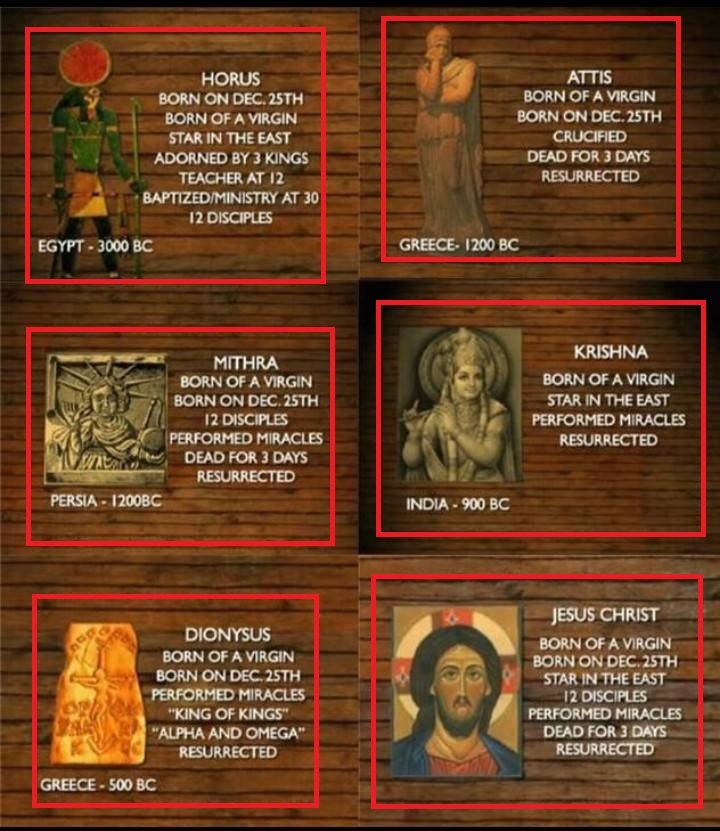
⛔ 𝐓𝐡𝐞 𝐏𝐚𝐠𝐚𝐧𝐬 𝐚𝐧𝐝 𝐭𝐡𝐞 𝐆𝐞𝐧𝐭𝐢𝐥𝐞𝐬 𝐮𝐬𝐞𝐝 𝐭𝐨 𝐨𝐛𝐬𝐞𝐫𝐯𝐞 𝐭𝐡𝐞 𝟐𝟓𝐭𝐡 𝐨𝐟 𝐃𝐞𝐜𝐞𝐦𝐛𝐞𝐫 𝐚𝐬 𝐭𝐡𝐞 𝐛𝐢𝐫𝐭𝐡𝐝𝐚𝐲 𝐨𝐟 𝐭𝐡𝐞𝐢𝐫 𝐠𝐨𝐝—𝐭𝐡𝐞 𝐒𝐮𝐧. 𝐏𝐚𝐮𝐥 𝐚𝐝𝐨𝐩𝐭𝐞𝐝 𝐭𝐡𝐢𝐬 𝐝𝐚𝐭𝐞 𝐚𝐥𝐬𝐨 𝐭𝐨 𝐛𝐞 𝐭𝐡𝐞 𝐬𝐲𝐦𝐛𝐨𝐥𝐢𝐜 𝐛𝐢𝐫𝐭𝐡𝐝𝐚𝐲 𝐨𝐟 𝐉𝐞𝐬𝐮𝐬 𝐂𝐡𝐫𝐢𝐬𝐭.
⛔ 𝐏𝐞𝐨𝐩𝐥𝐞 𝐜𝐚𝐦𝐞 𝐢𝐧𝐭𝐨 𝐯𝐢𝐨𝐥𝐞𝐧𝐭 𝐜𝐨𝐥𝐥𝐢𝐬𝐢𝐨𝐧 𝐰𝐢𝐭𝐡 𝐭𝐡𝐞 𝐁𝐢𝐬𝐡𝐨𝐩𝐬. 𝐅𝐨𝐫 𝐊𝐢𝐧𝐠 𝐂𝐨𝐧𝐬𝐭𝐚𝐧𝐭𝐢𝐧𝐞 𝐭𝐡𝐢𝐧𝐠𝐬 𝐰𝐞𝐫𝐞 𝐠𝐞𝐭𝐭𝐢𝐧𝐠 𝐟𝐫𝐨𝐦 𝐛𝐚𝐝 𝐭𝐨 𝐰𝐨𝐫𝐬𝐞. 𝐇𝐢𝐬 𝐚𝐩𝐩𝐞𝐚𝐥 𝐰𝐚𝐬 𝐟𝐨𝐫 𝐭𝐡𝐞 𝐮𝐧𝐢𝐭𝐲 𝐨𝐟 𝐫𝐞𝐥𝐢𝐠𝐢𝐨𝐮𝐬 𝐨𝐩𝐢𝐧𝐢𝐨𝐧 𝐚𝐬 𝐭𝐡𝐞 𝐛𝐞𝐬𝐭 𝐠𝐮𝐚𝐫𝐚𝐧𝐭𝐞𝐞 𝐨𝐟 𝐩𝐞𝐚𝐜𝐞 𝐢𝐧 𝐡𝐢𝐬 𝐄𝐦𝐩𝐢𝐫𝐞.
𝐅𝐢𝐧𝐚𝐥𝐥𝐲, 𝐭𝐡𝐫𝐨𝐮𝐠𝐡 𝐚 𝐑𝐨𝐲𝐚𝐥 𝐝𝐞𝐜𝐫𝐞𝐞, 𝐭𝐡𝐞 𝐟𝐨𝐥𝐥𝐨𝐰𝐢𝐧𝐠 𝐩𝐨𝐢𝐧𝐭𝐬 (𝐨𝐟 𝐏𝐚𝐮𝐥𝐢𝐧𝐞) 𝐂𝐡𝐮𝐫𝐜𝐡 𝐰𝐞𝐫𝐞 𝐩𝐫𝐨𝐦𝐮𝐥𝐠𝐚𝐭𝐞𝐝 𝐟𝐨𝐫 𝐞𝐯𝐞𝐫𝐲𝐛𝐨𝐝𝐲 𝐭𝐨 𝐨𝐛𝐞𝐲 𝐚𝐧𝐝 𝐟𝐨𝐥𝐥𝐨𝐰. 𝐓𝐡𝐞𝐲 𝐚𝐫𝐞:-
⛔ 𝐃𝐨𝐠𝐦𝐚 𝐨𝐟 𝐭𝐡𝐞 𝐓𝐫𝐢𝐧𝐢𝐭𝐲 𝐰𝐚𝐬 𝐚𝐜𝐜𝐞𝐩𝐭𝐞𝐝 𝐚𝐬 𝐚 𝐟𝐮𝐧𝐝𝐚𝐦𝐞𝐧𝐭𝐚𝐥 𝐝𝐨𝐜𝐭𝐫𝐢𝐧𝐞 𝐨𝐟 𝐂𝐡𝐫𝐢𝐬𝐭𝐢𝐚𝐧𝐢𝐭𝐲.
⛔ 𝐃𝐞𝐜𝐥𝐚𝐫𝐞𝐝 𝐭𝐡𝐞 𝐑𝐨𝐦𝐚𝐧 𝐒𝐮𝐧𝐝𝐚𝐲 𝐭𝐨 𝐛𝐞 𝐭𝐡𝐞 𝐂𝐡𝐫𝐢𝐬𝐭𝐢𝐚𝐧 𝐒𝐚𝐛𝐛𝐚𝐭𝐡.
⛔ `𝐀𝐝𝐨𝐩𝐭𝐞𝐝 𝐭𝐡𝐞 𝐭𝐫𝐚𝐝𝐢𝐭𝐢𝐨𝐧𝐚𝐥 𝐛𝐢𝐫𝐭𝐡𝐝𝐚𝐲 𝐨𝐟 𝐭𝐡𝐞 𝐒𝐮𝐧 𝐠𝐨𝐝, 𝐭𝐡𝐞 𝐭𝐰𝐞𝐧𝐭𝐲-𝐟𝐢𝐟𝐭𝐡 𝐨𝐟 𝐃𝐞𝐜𝐞𝐦𝐛𝐞𝐫, 𝐚𝐬 𝐭𝐡𝐞 𝐛𝐢𝐫𝐭𝐡𝐝𝐚𝐲 𝐨𝐟 𝐉𝐞𝐬𝐮𝐬.
𝐓𝐡𝐮𝐬 𝐭𝐡𝐞 𝐭𝐫𝐮𝐞 𝐂𝐡𝐫𝐢𝐬𝐭𝐢𝐚𝐧𝐢𝐭𝐲 𝐨𝐟 𝐉𝐞𝐬𝐮𝐬 𝐝𝐢𝐞𝐝 𝐚𝐧𝐝 𝐏𝐚𝐮𝐥𝐢𝐧𝐢𝐜 𝐂𝐡𝐫𝐢𝐬𝐭𝐢𝐚𝐧𝐢𝐭𝐲 𝐰𝐨𝐧. 𝐀𝐧𝐮𝐬-𝐭𝐡𝐞 𝐌𝐨𝐧𝐨𝐭𝐡𝐞𝐢𝐬𝐭 𝐰𝐡𝐨 𝐰𝐚𝐬 𝐭𝐡𝐞 𝐁𝐢𝐬𝐡𝐨𝐩 𝐨𝐟 𝐂𝐨𝐧𝐬𝐭𝐚𝐧𝐭𝐢𝐧𝐨𝐩𝐥𝐞 𝐝𝐢𝐞𝐝 𝐚𝐟𝐭𝐞𝐫 𝐭𝐡𝐫𝐞𝐞 𝐲𝐞𝐚𝐫𝐬 𝐢𝐧 𝟑𝟑𝟔 𝐀.𝐃. 𝐝𝐮𝐞 𝐭𝐨 𝐩𝐨𝐢𝐬𝐨𝐧𝐢𝐧𝐠.
𝐀𝐥𝐥𝐚𝐡 𝐊𝐧𝐨𝐰𝐬 𝐁𝐞𝐬𝐭.
𝐑𝐞𝐟𝐞𝐫𝐞𝐧𝐜𝐞𝐬
The Mythic Origins of Christianity: How Is Christianity Similar to Pagan Religions?
Pagan Roots of the Trinity Doctrine
What’s in a name? Months of the year
Month Names and Their Roman Origins
Pagan origins of English weekday names
The Pagan Roots of Good Friday
Is Good Friday a pagan holiday?
Satna Claus the Great Imposter
Origin of Easter: From pagan festivals and Christianity to bunnies and chocolate eggs
Did Allah deceive Christians by allowing a substitute person on the Cross?
Easter Story Found in Qur’an? Nope
Origin of Easter: From pagan festivals and Christianity to bunnies and chocolate eggs